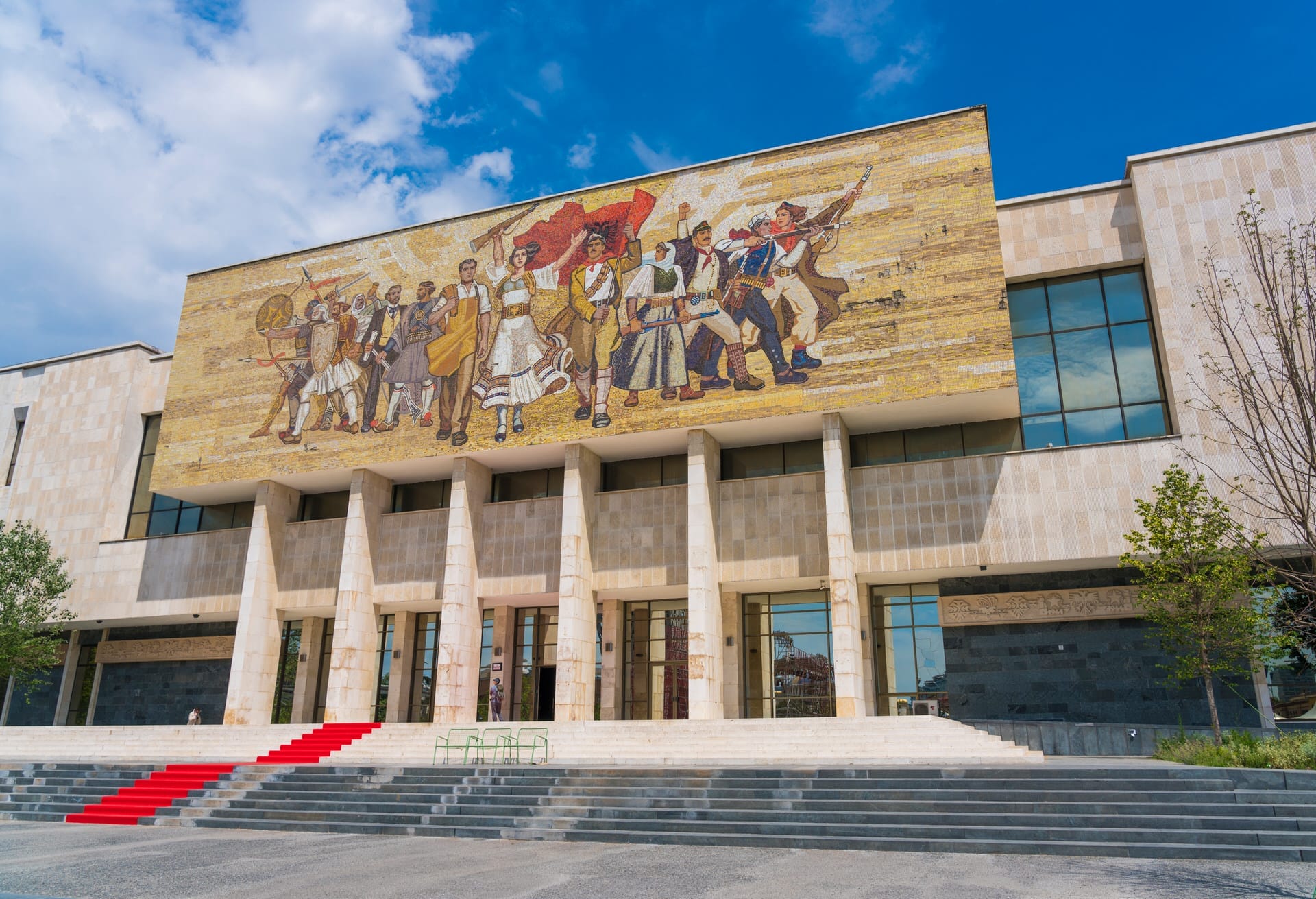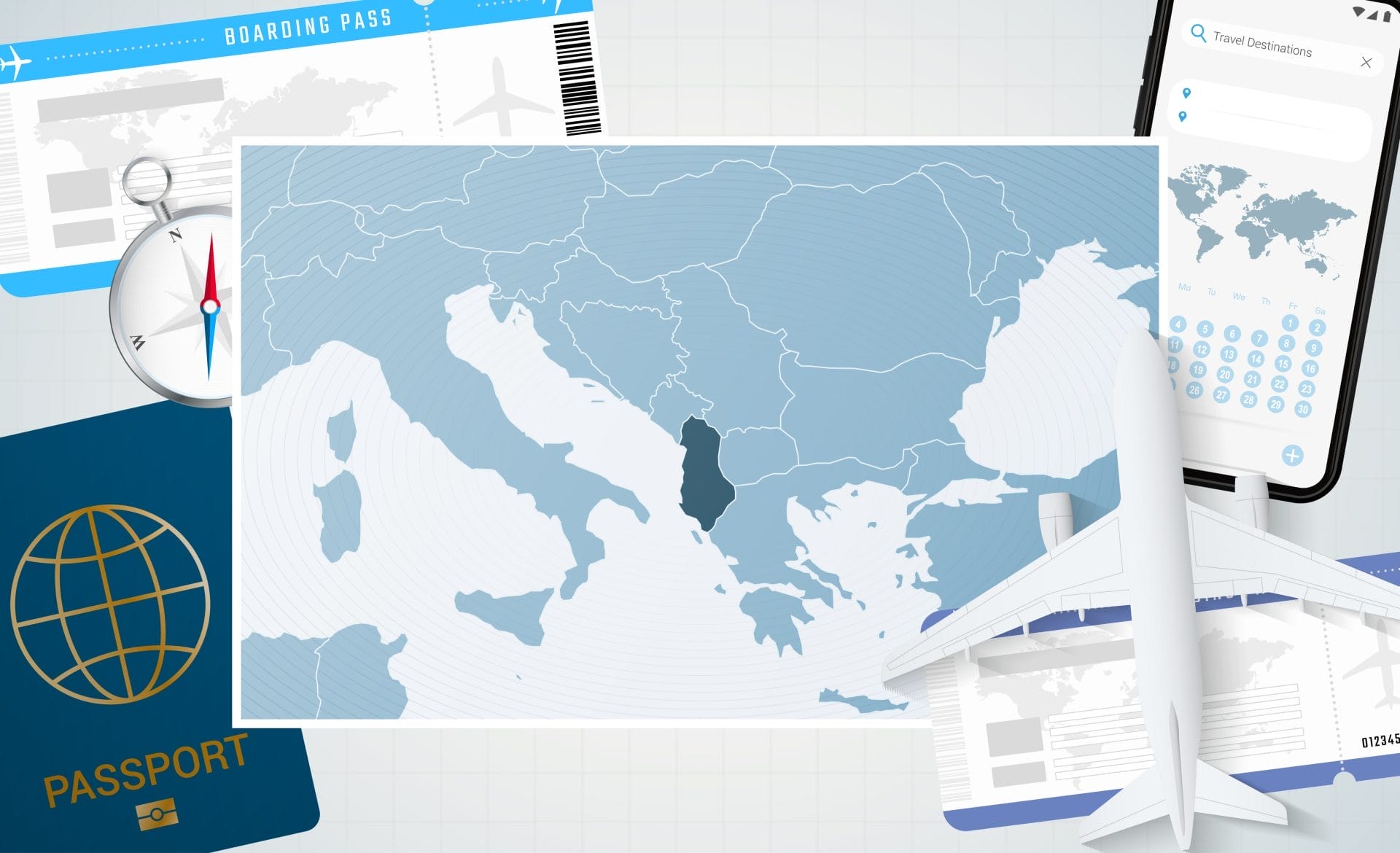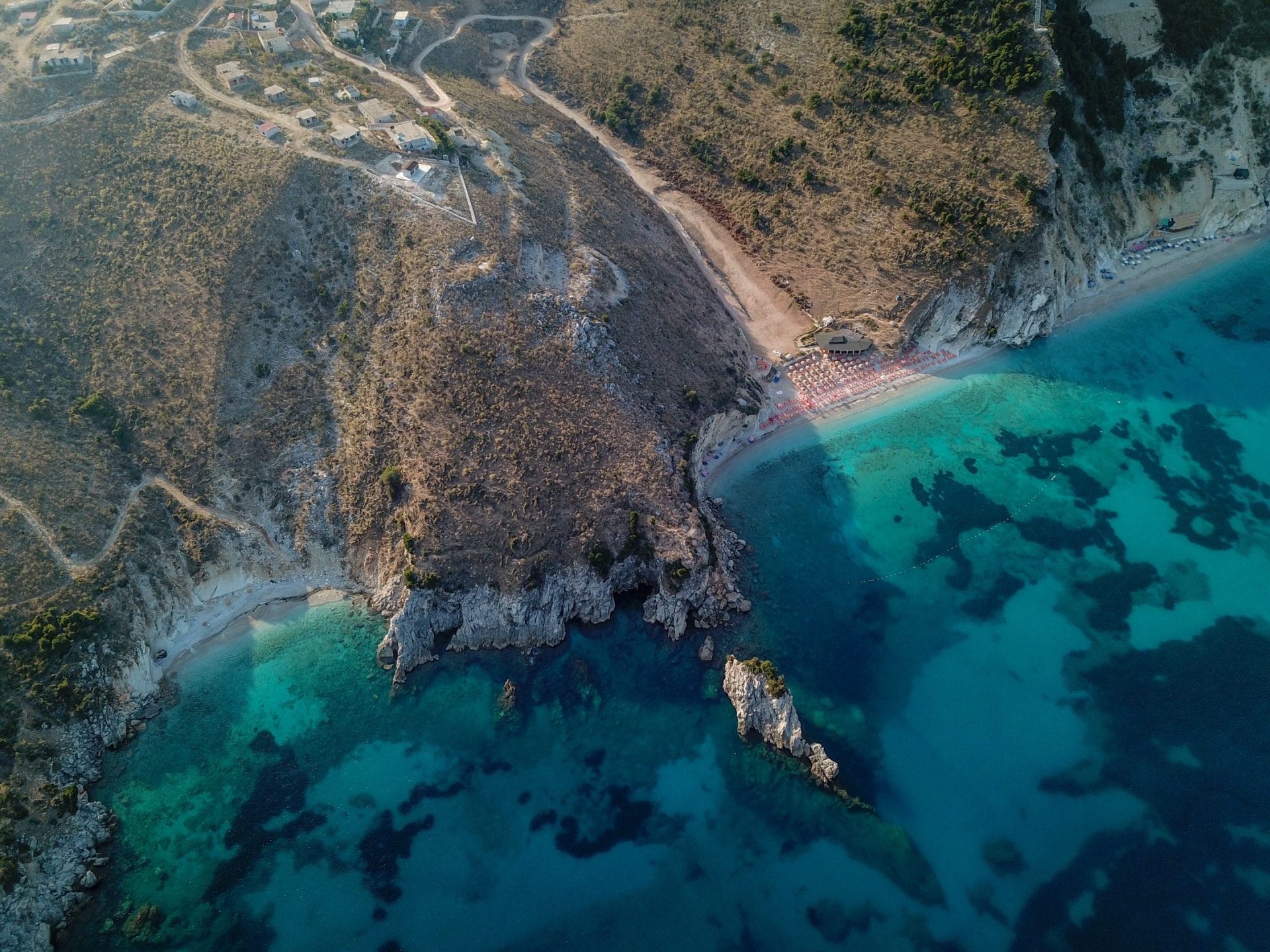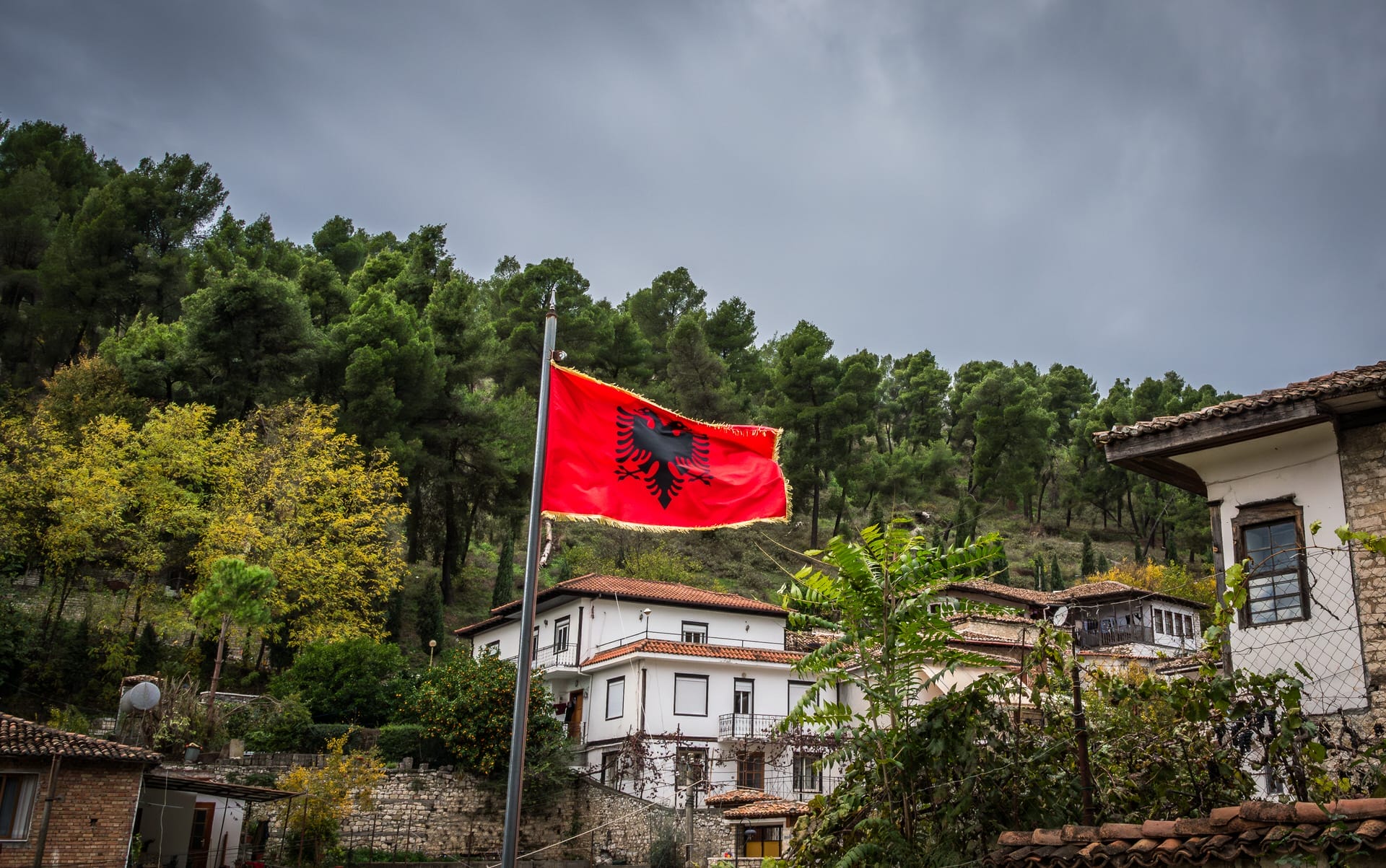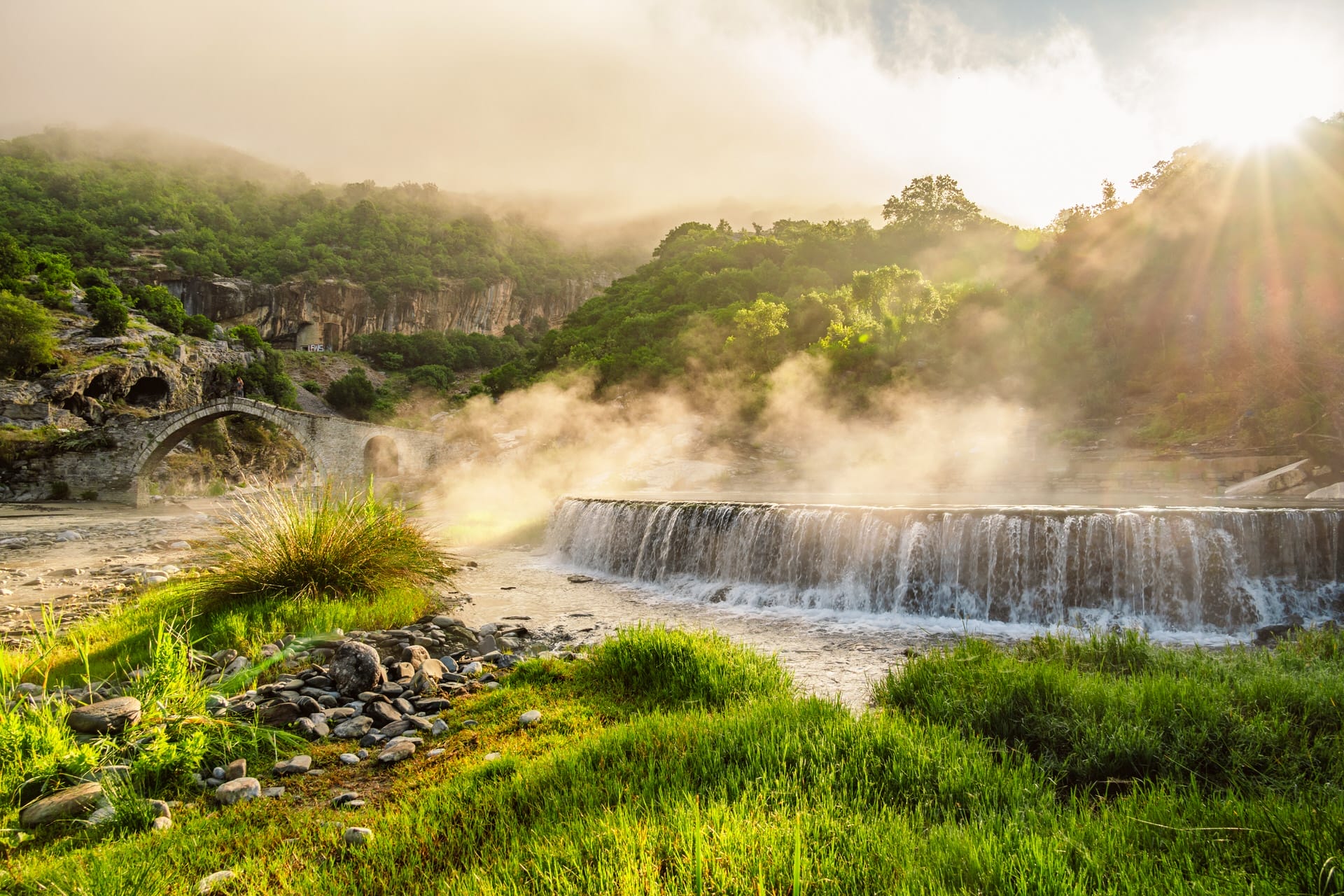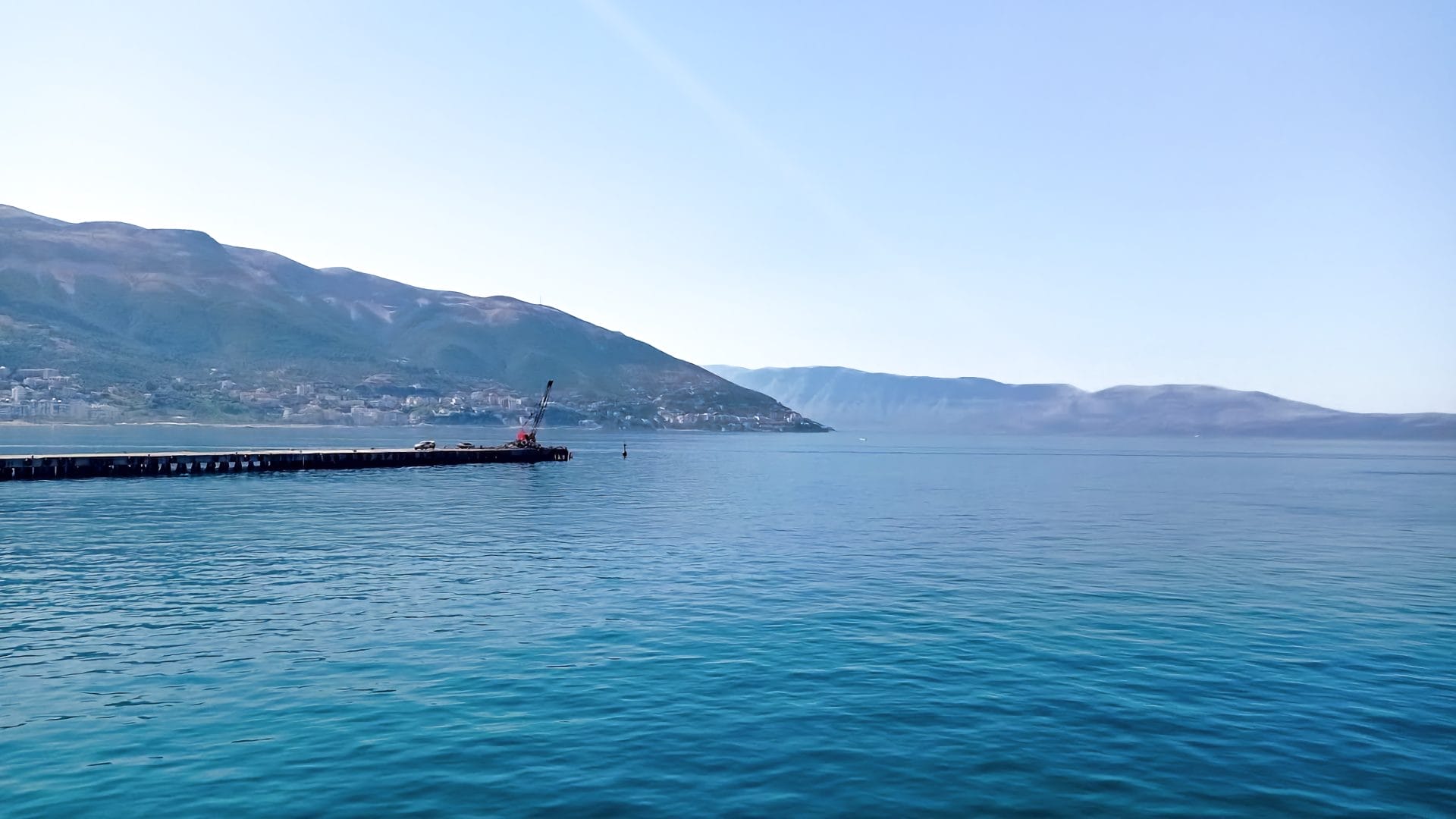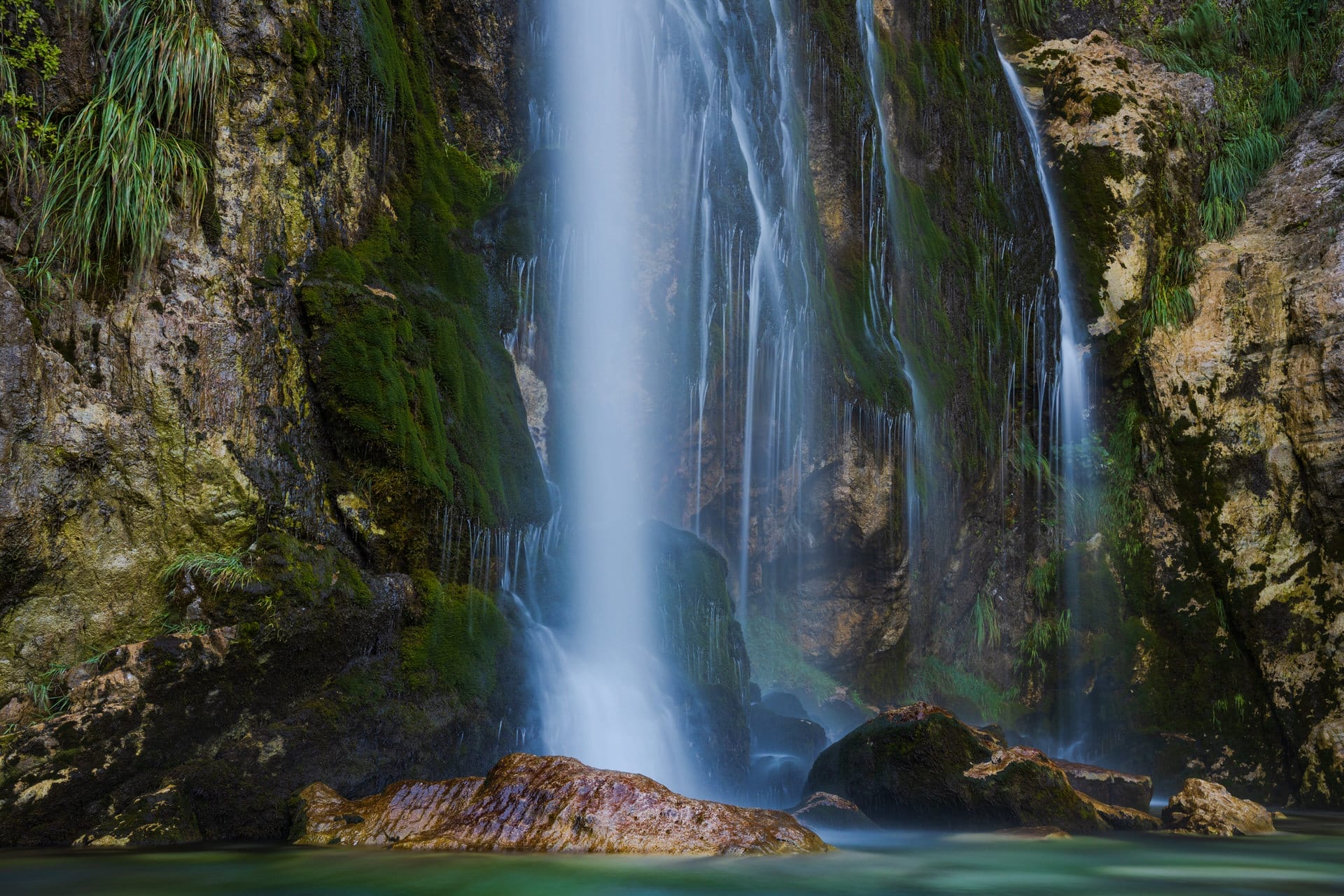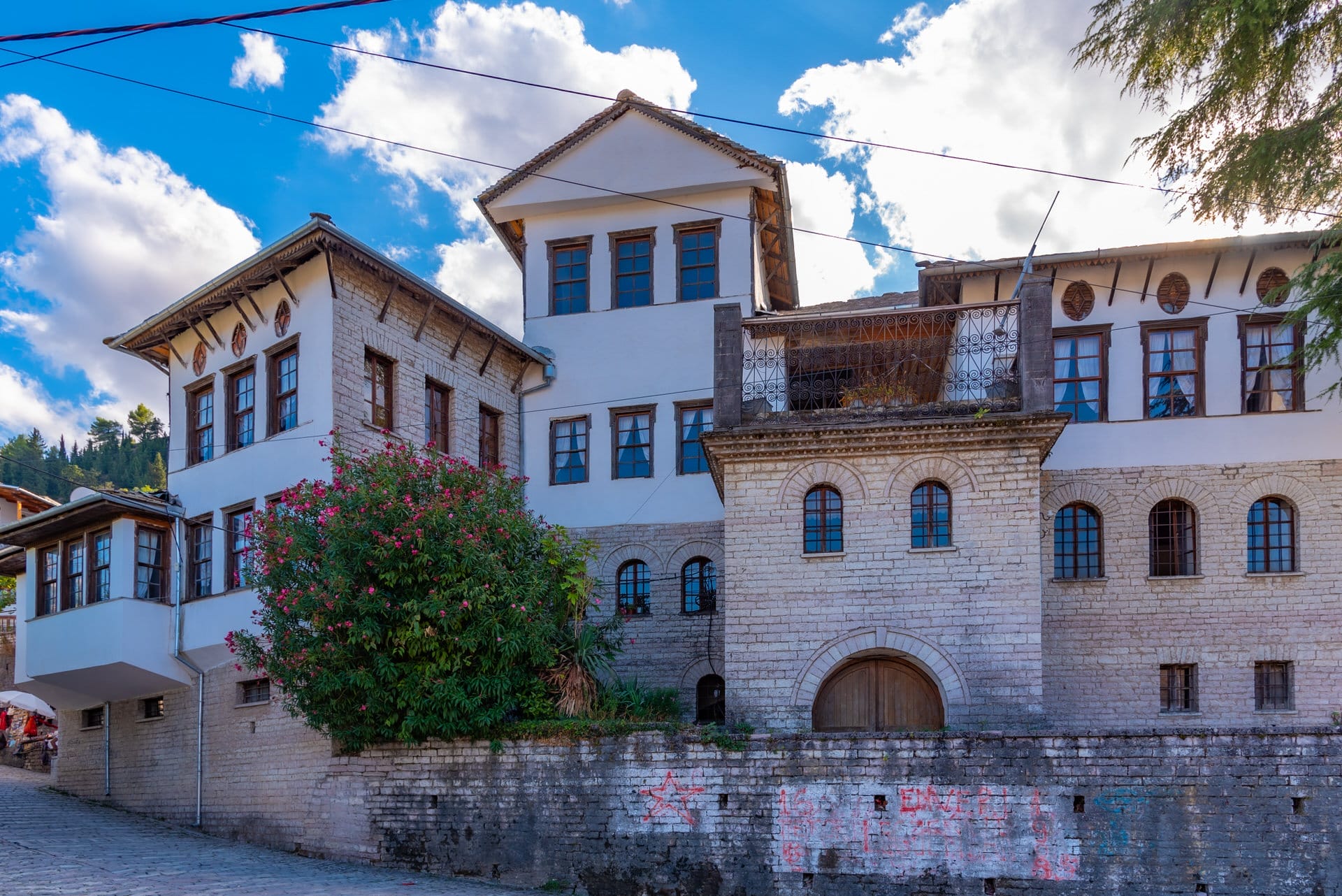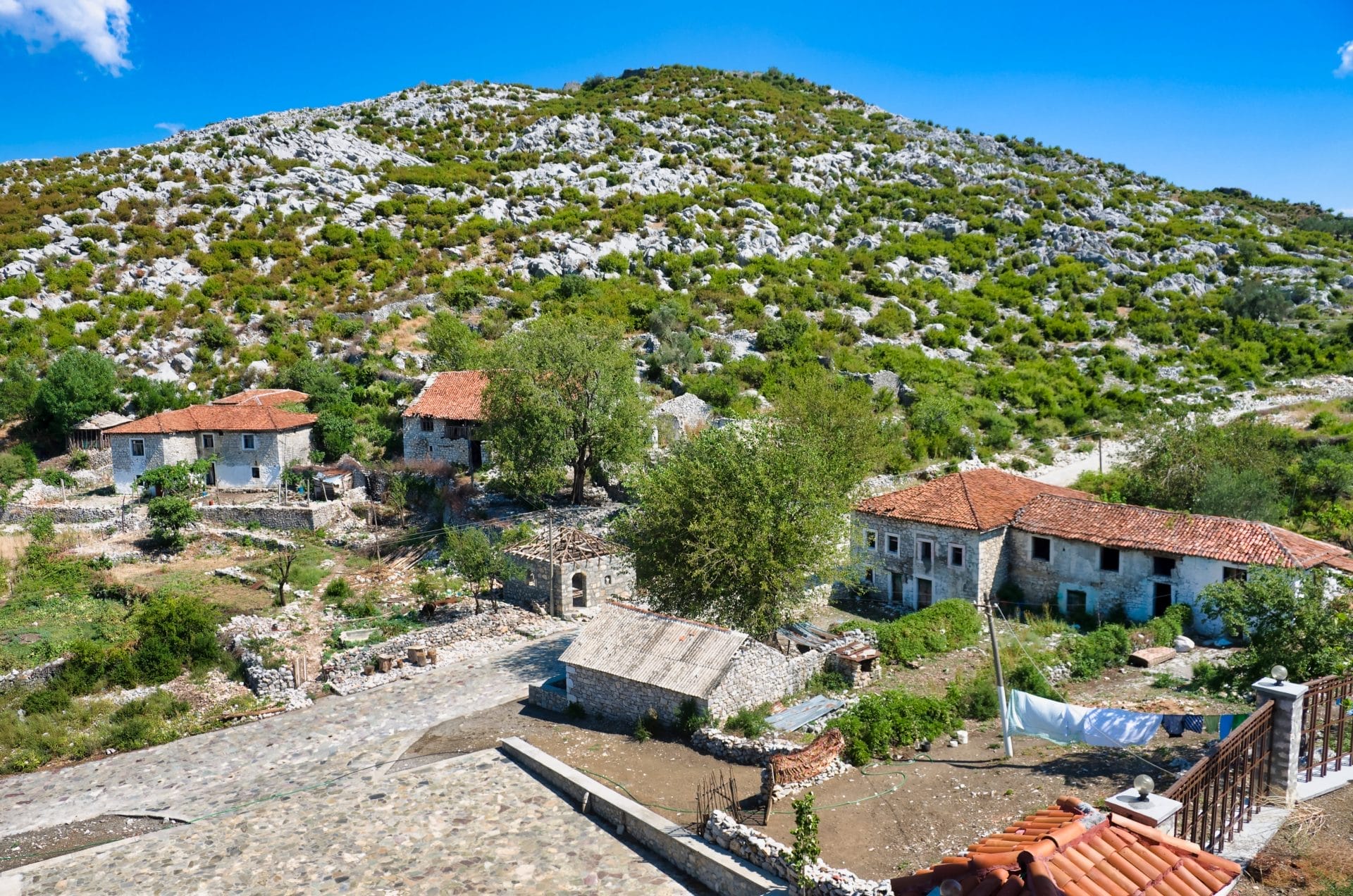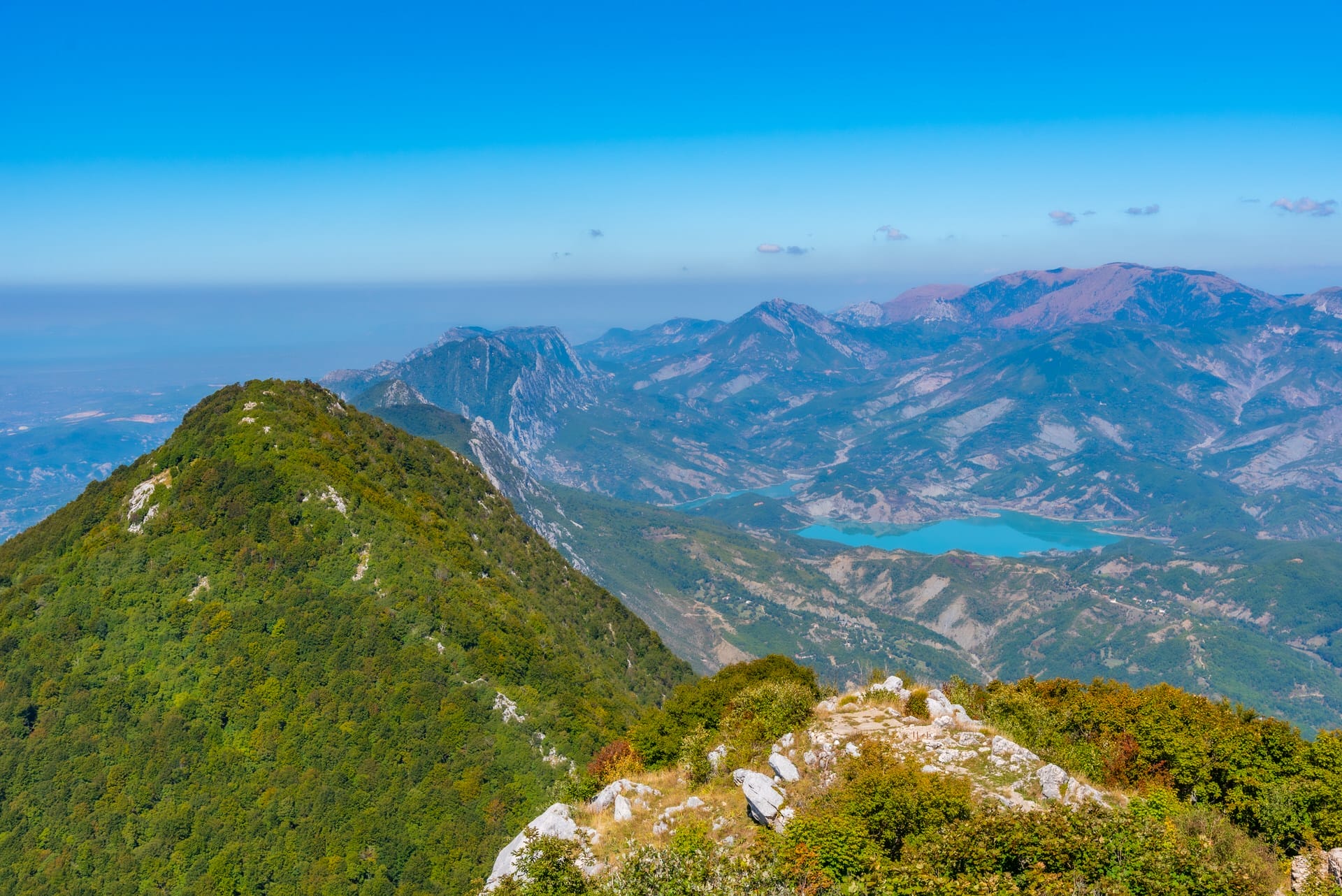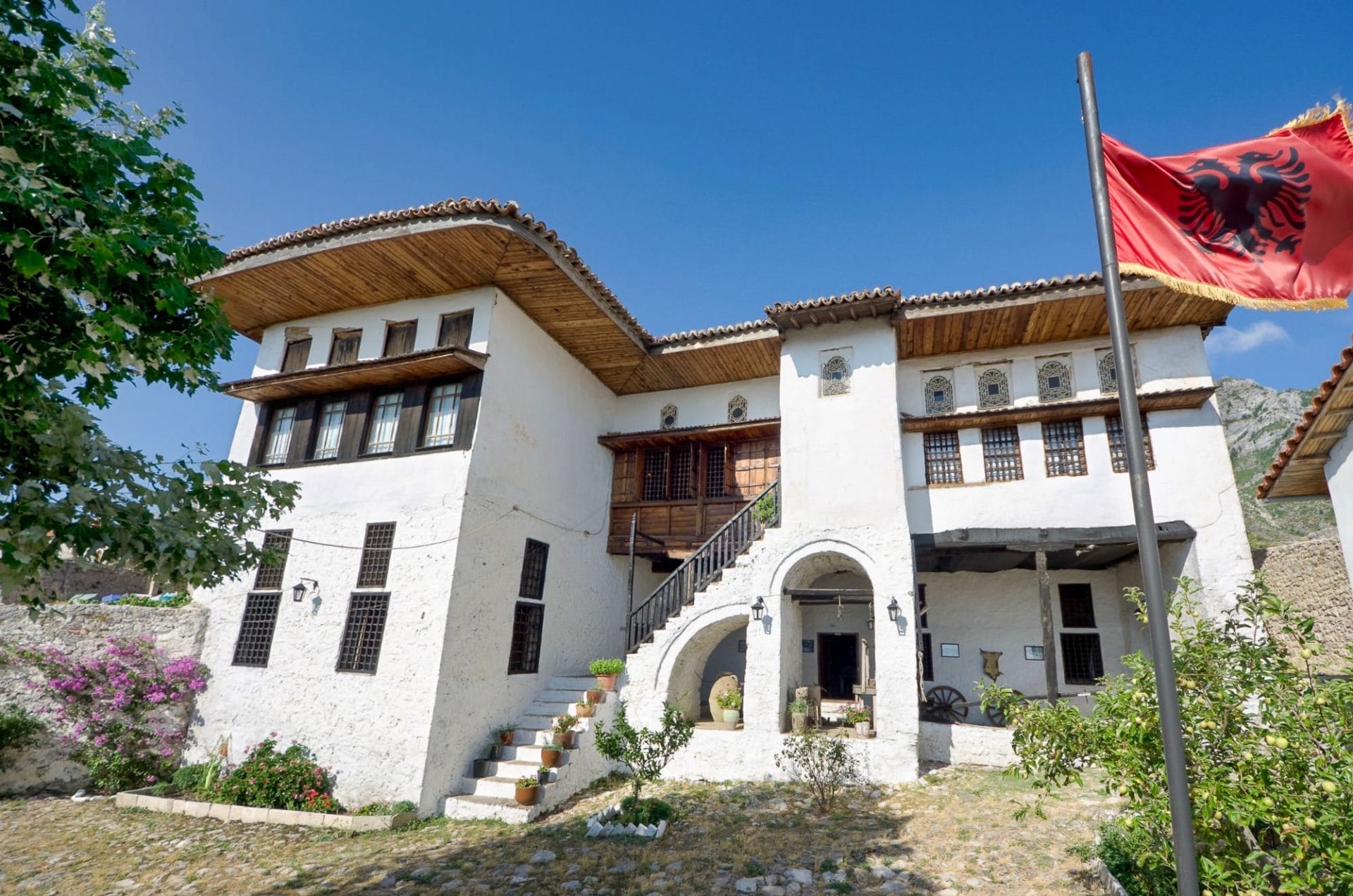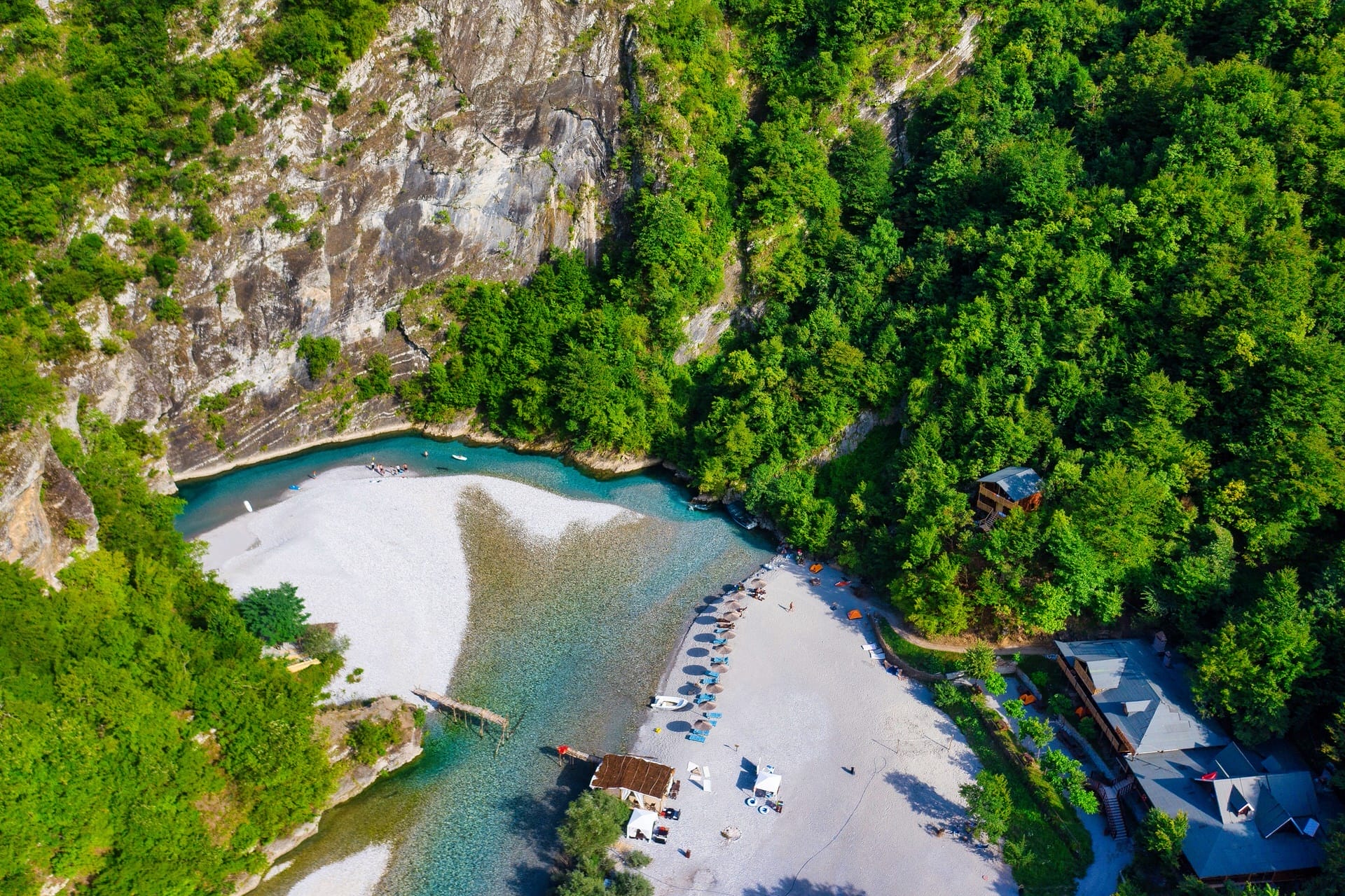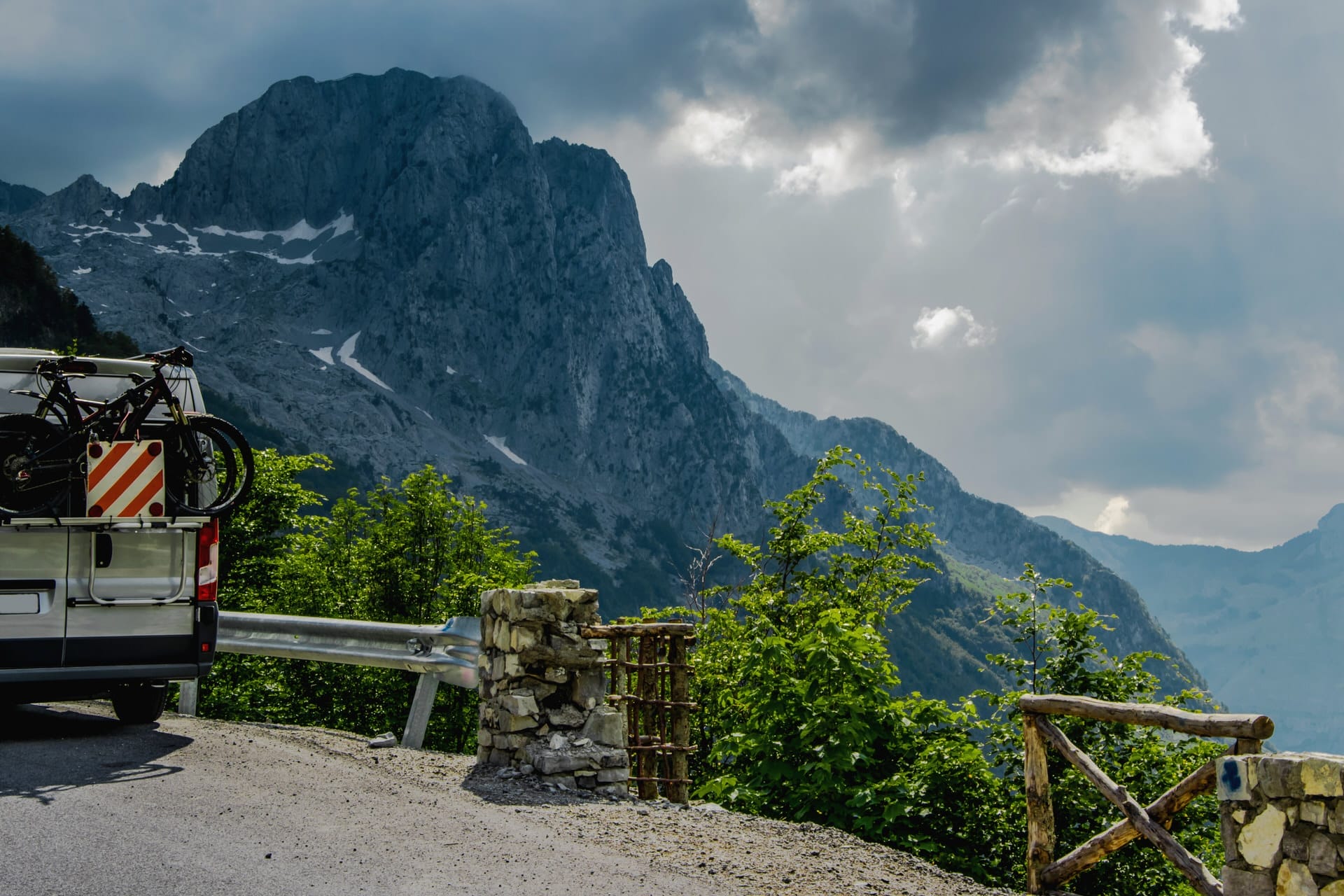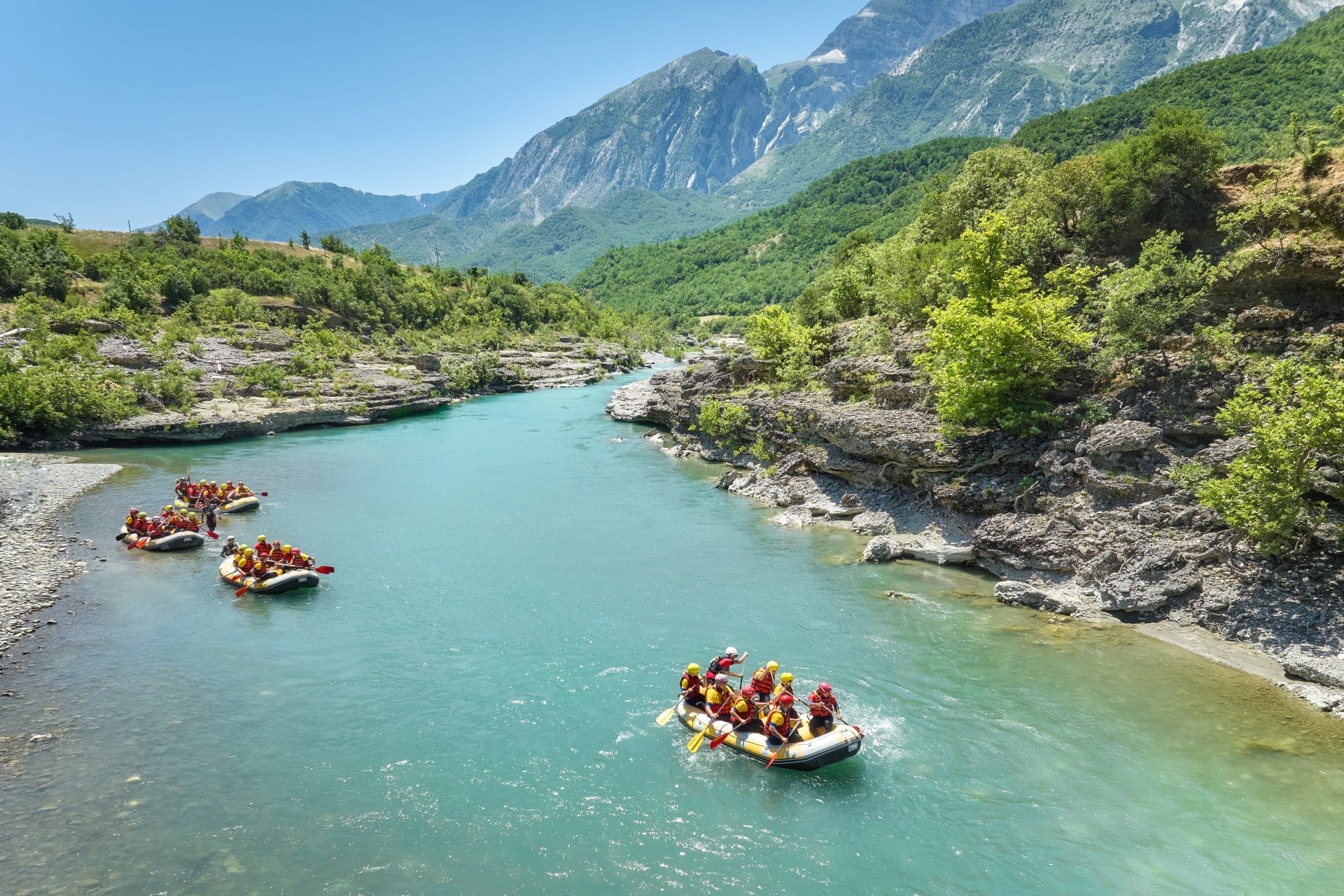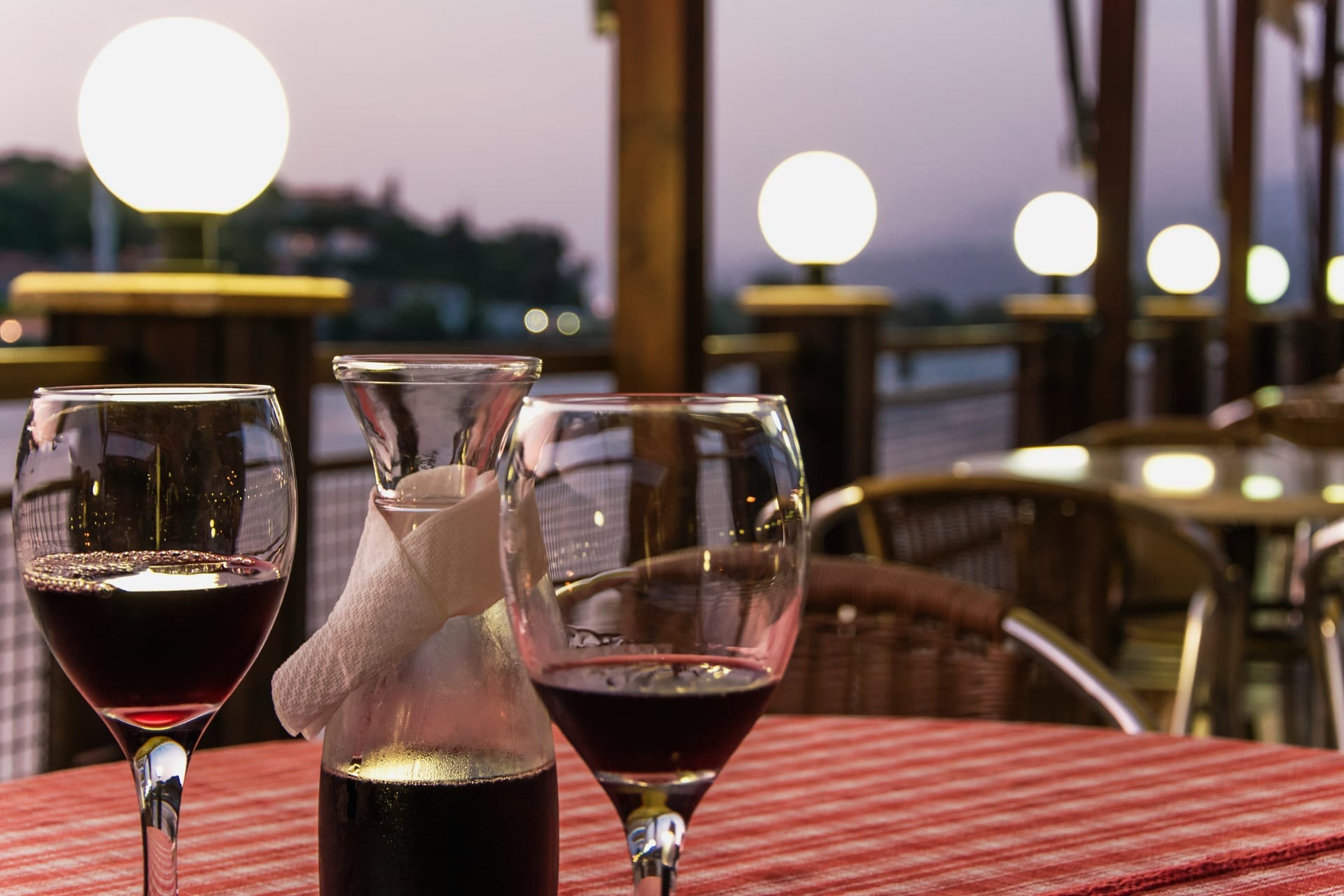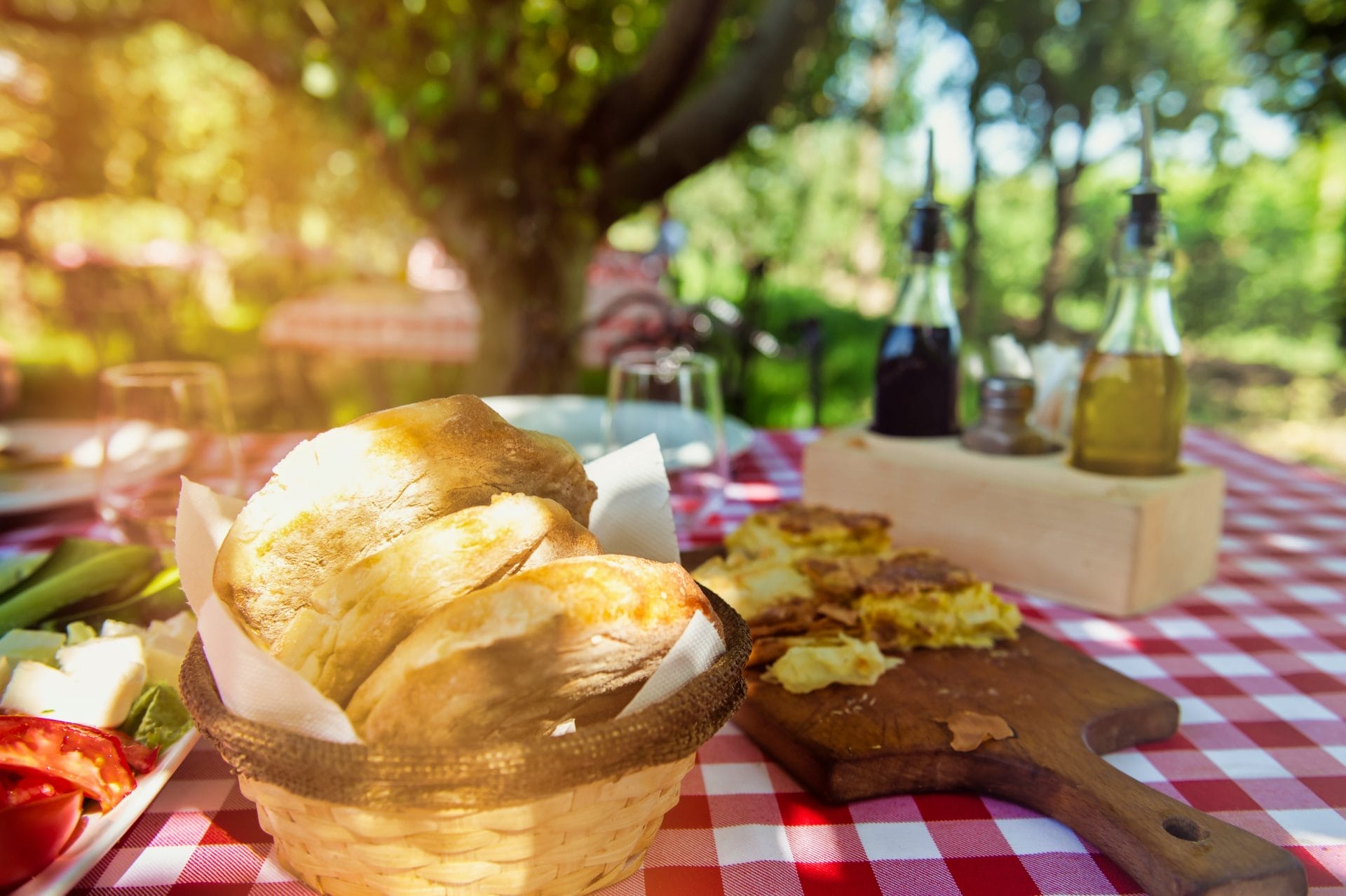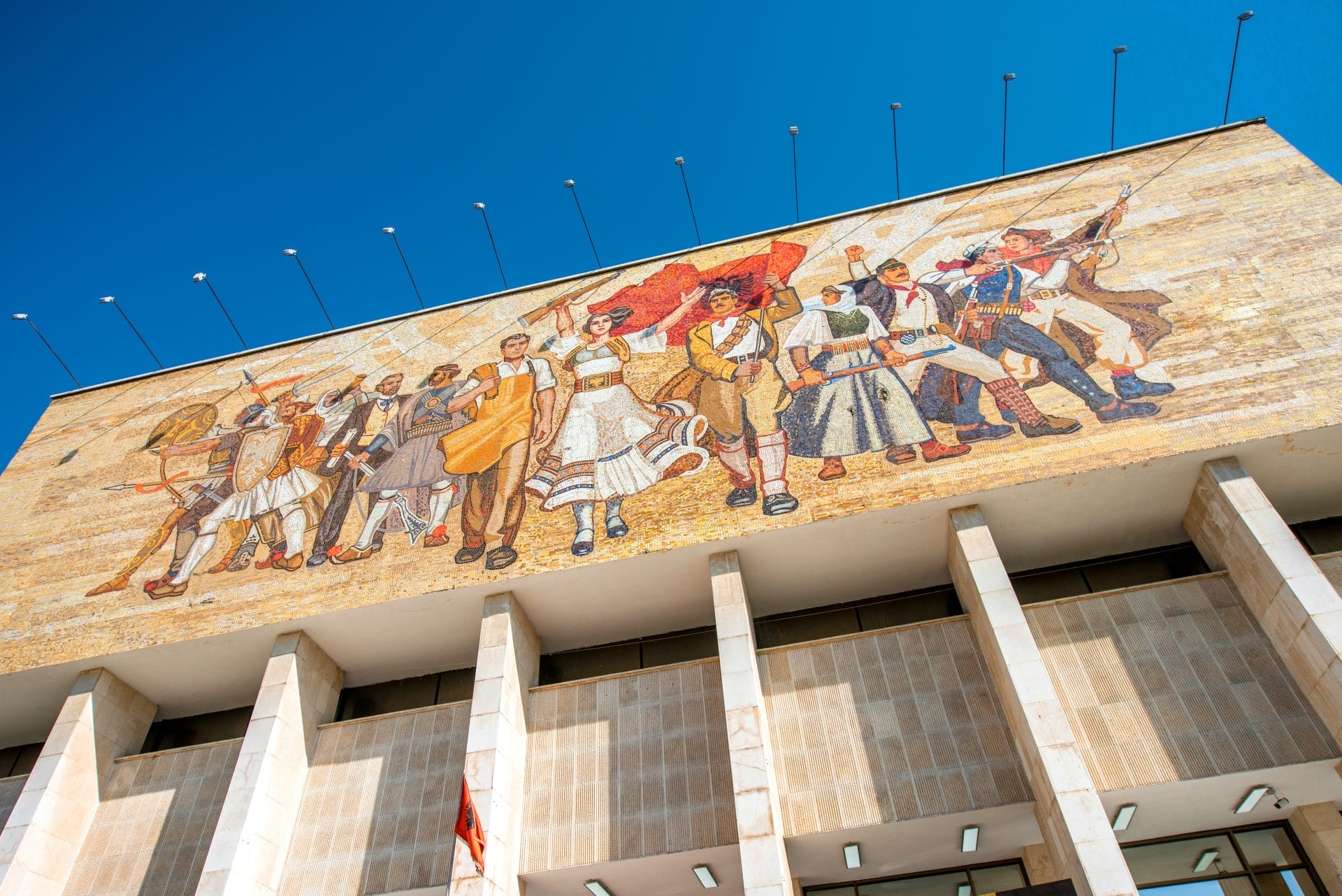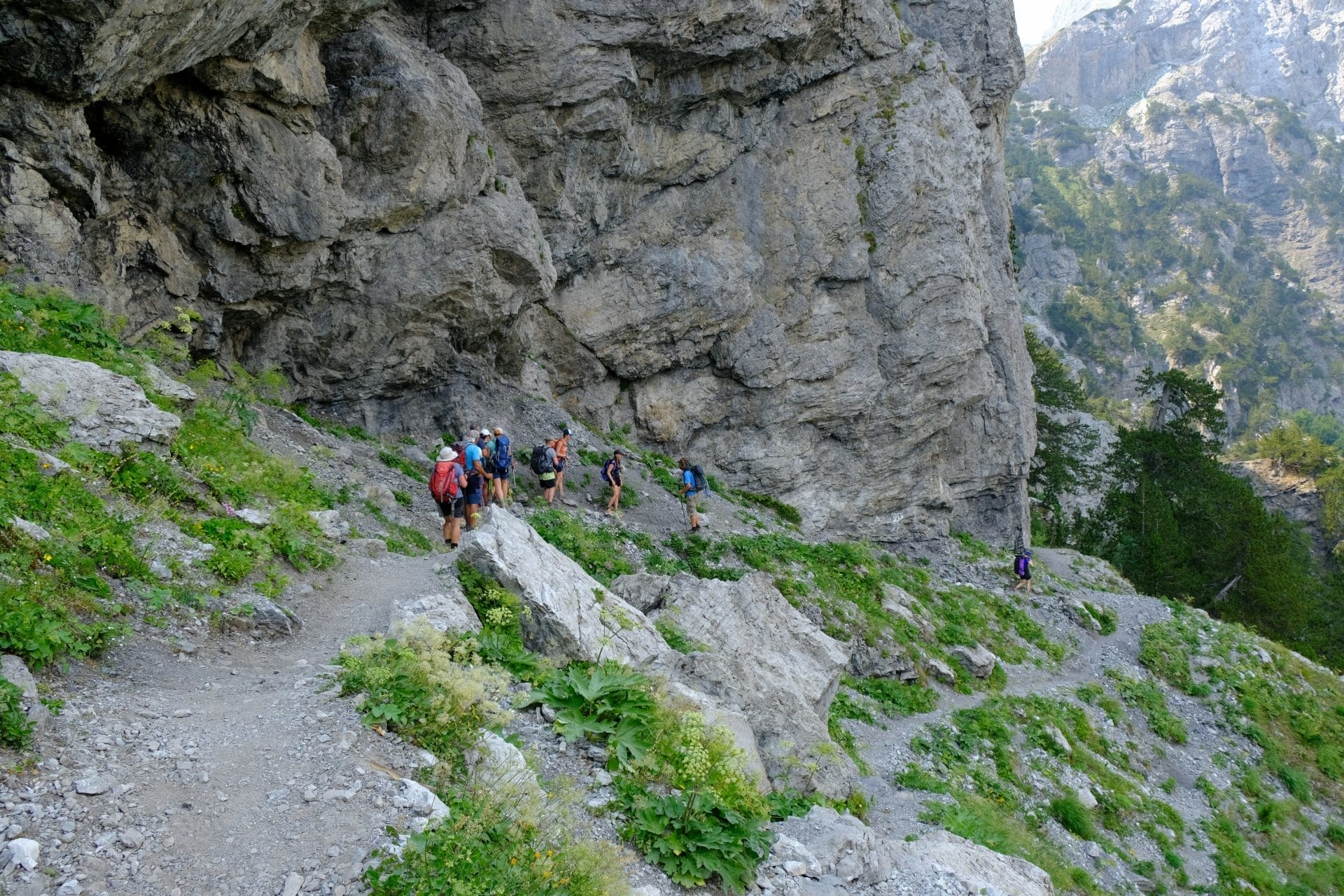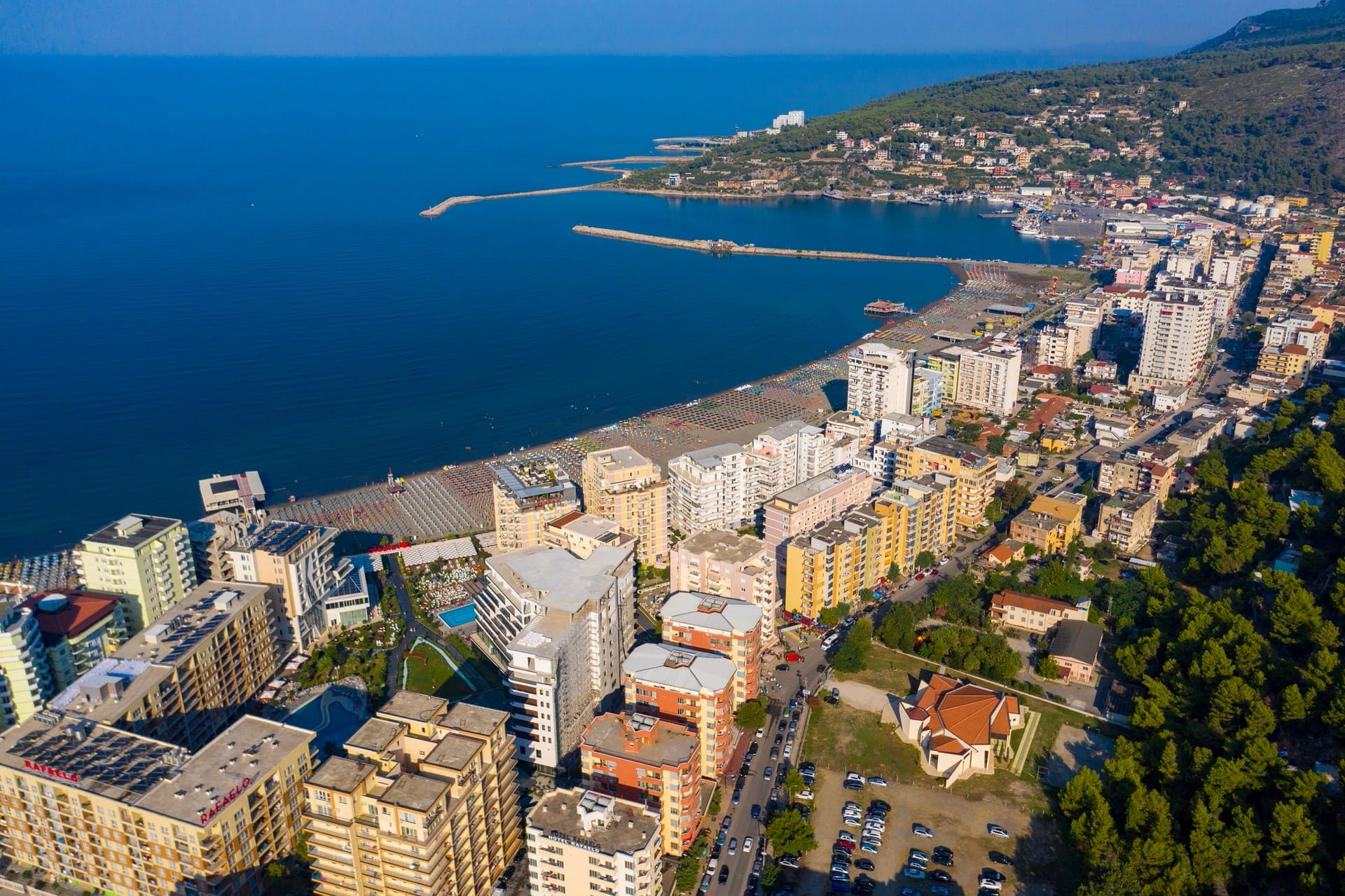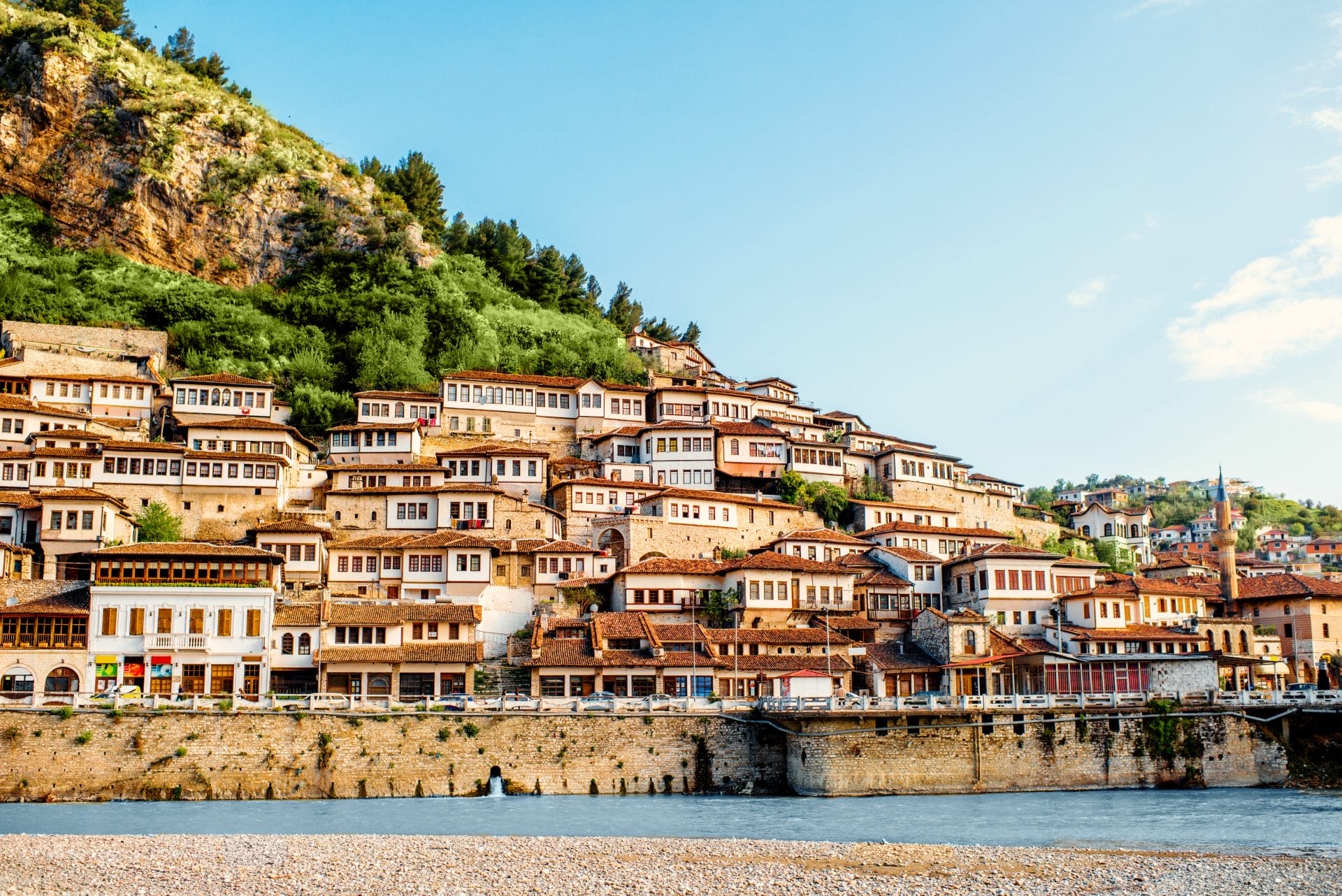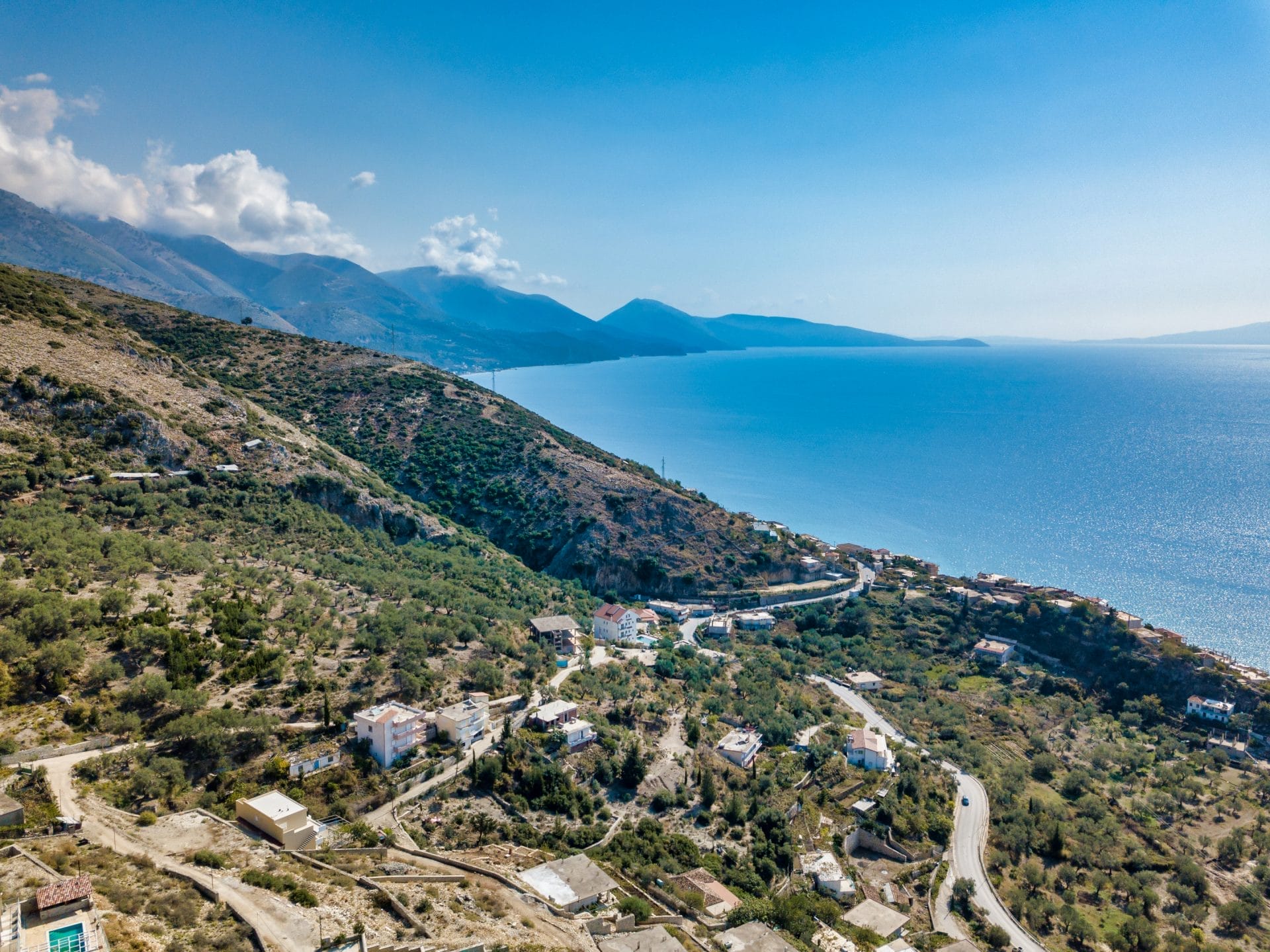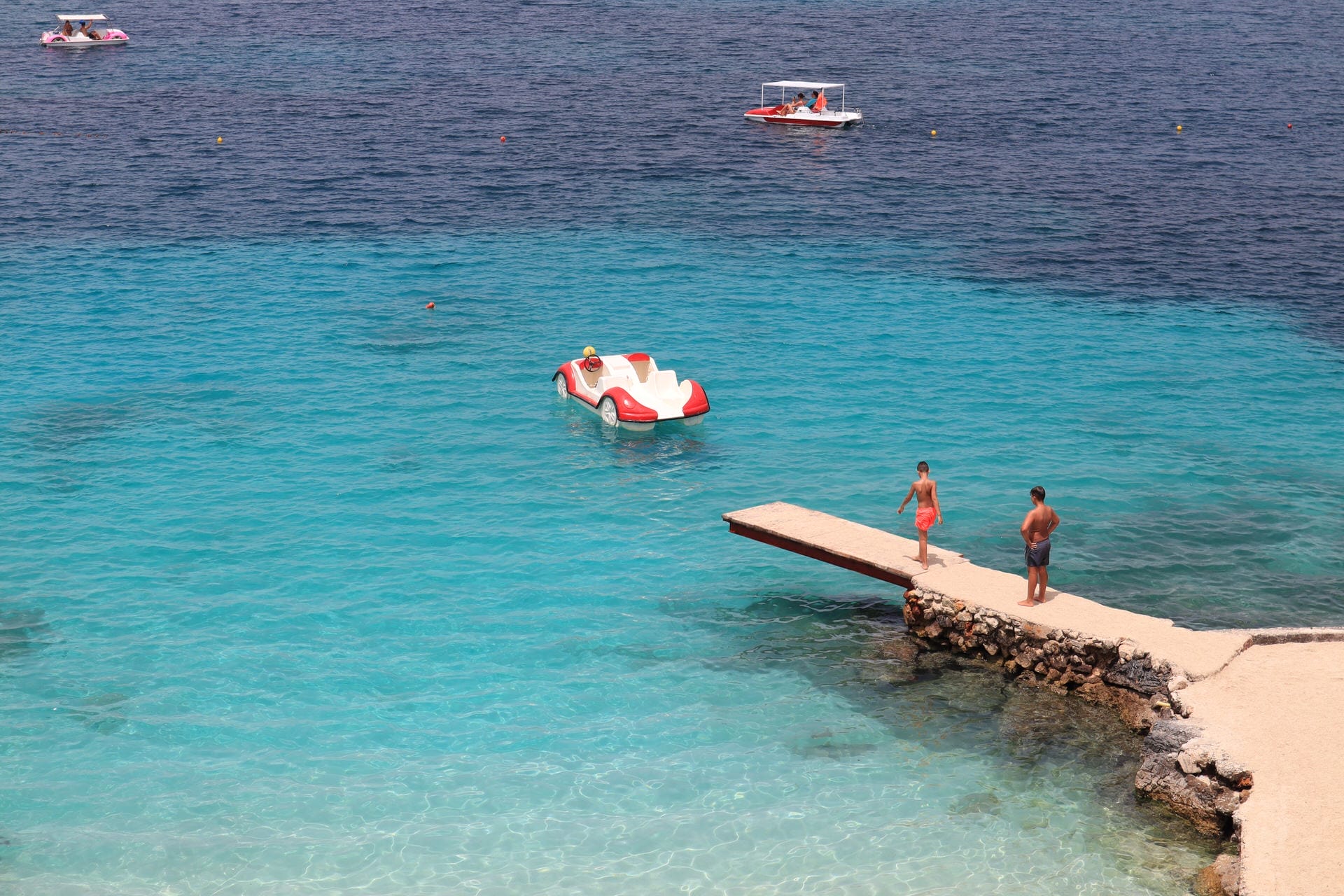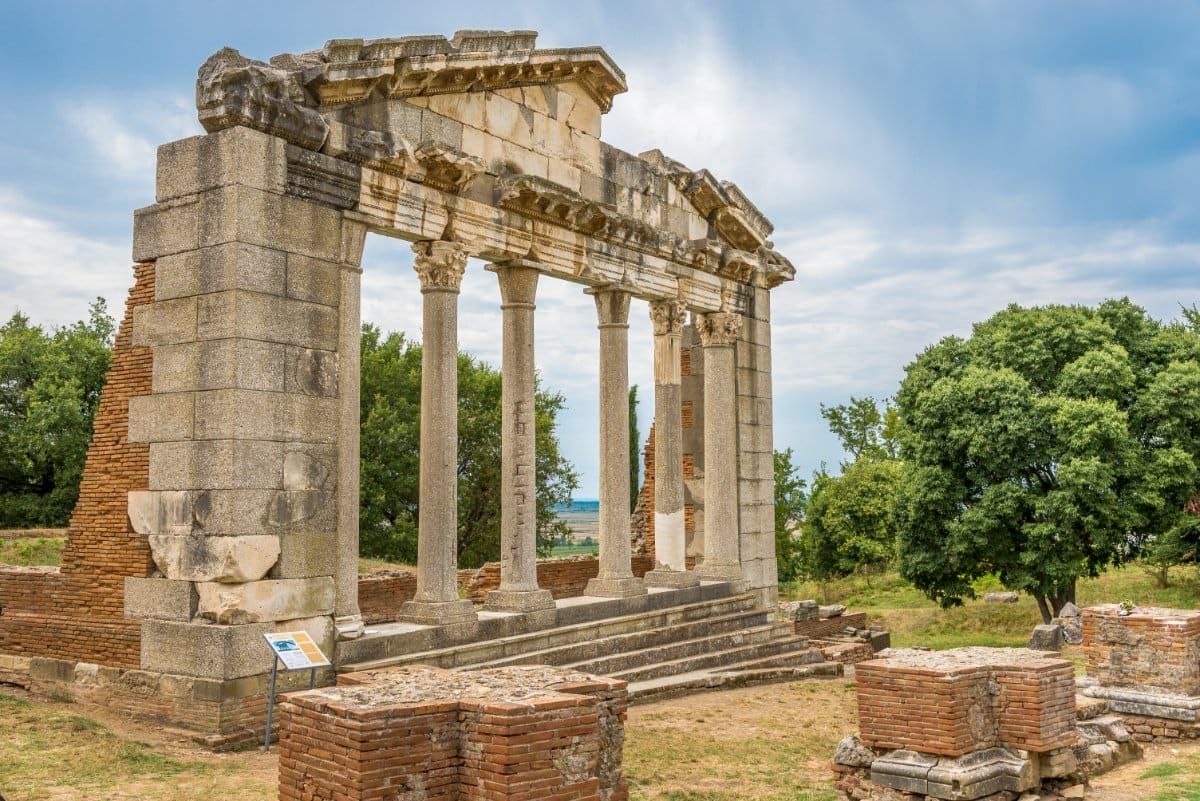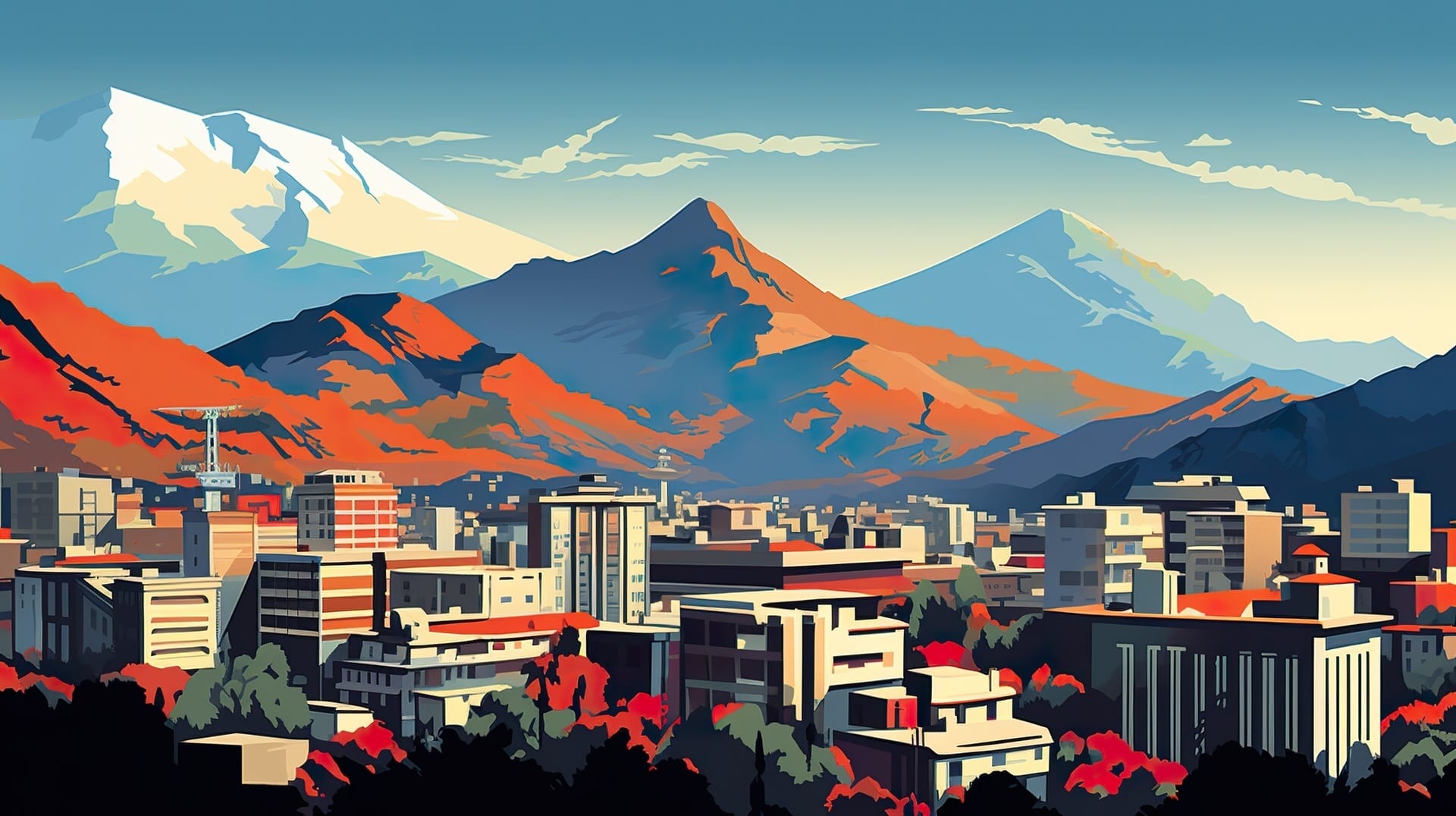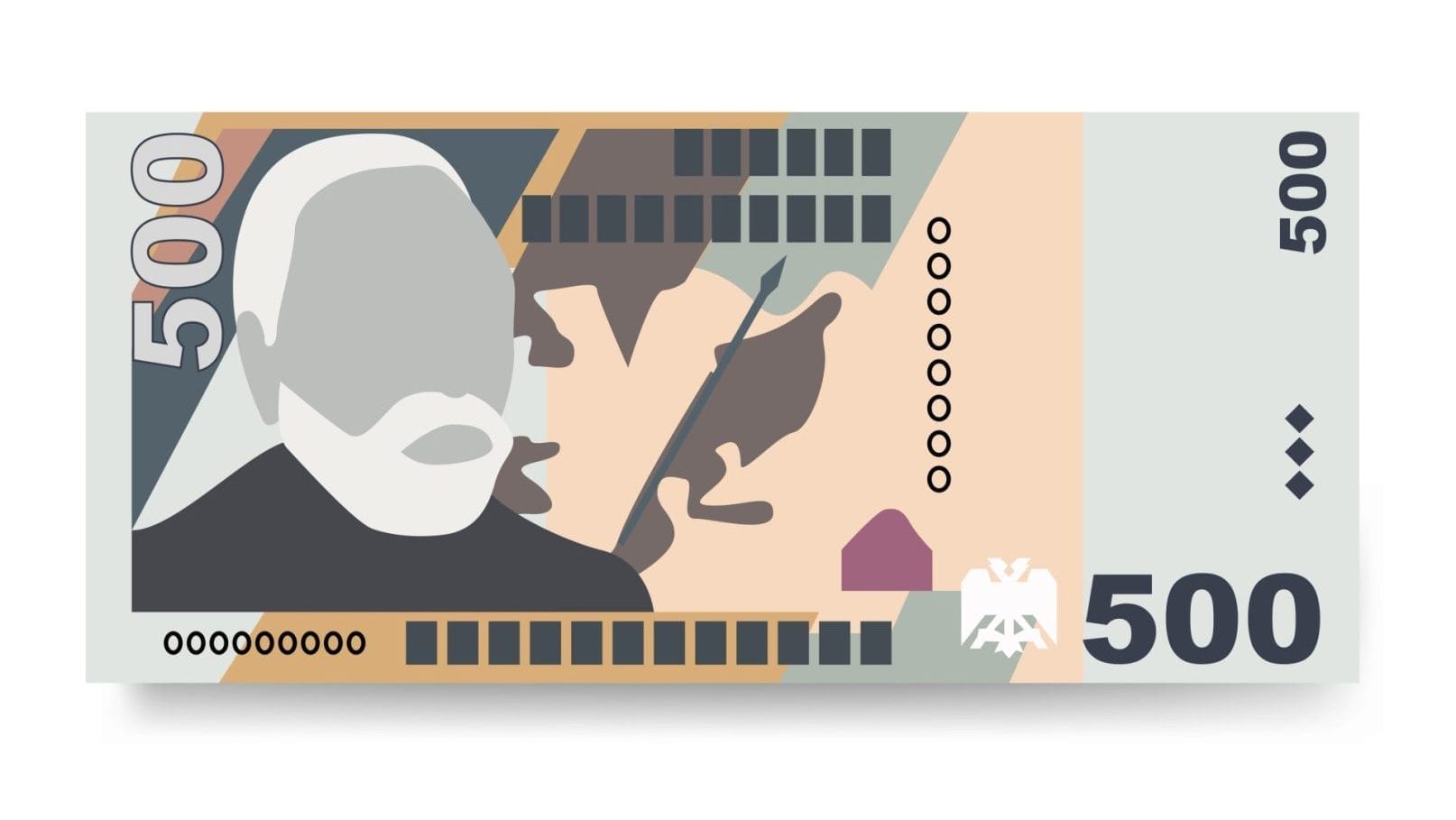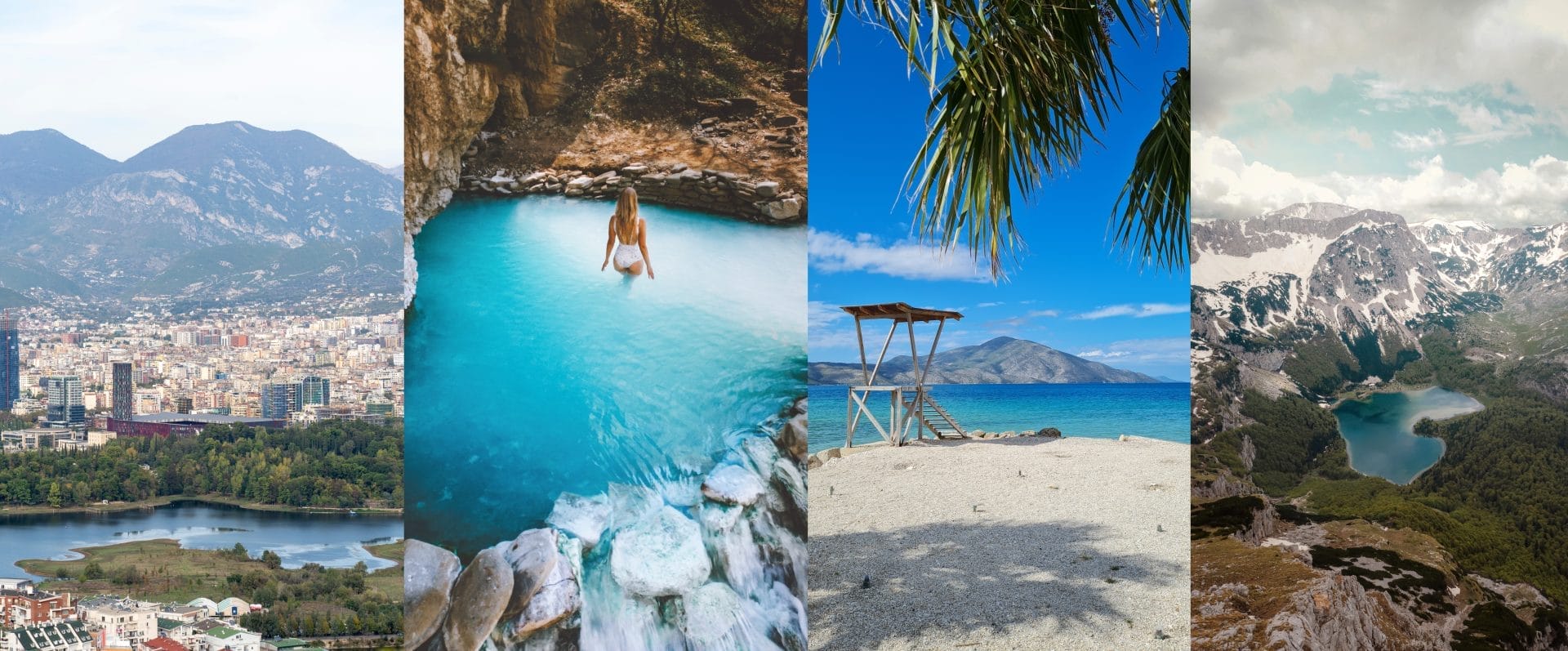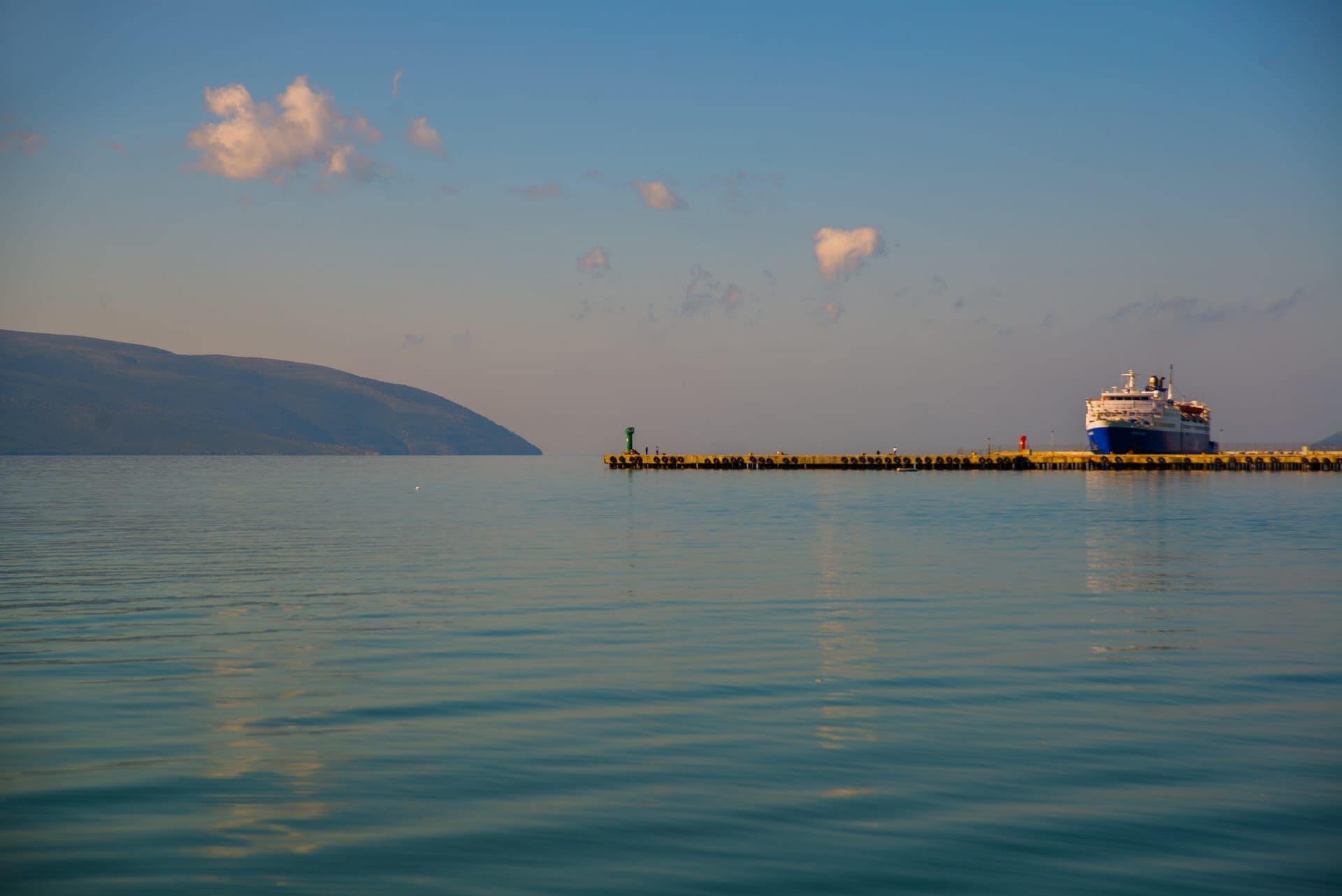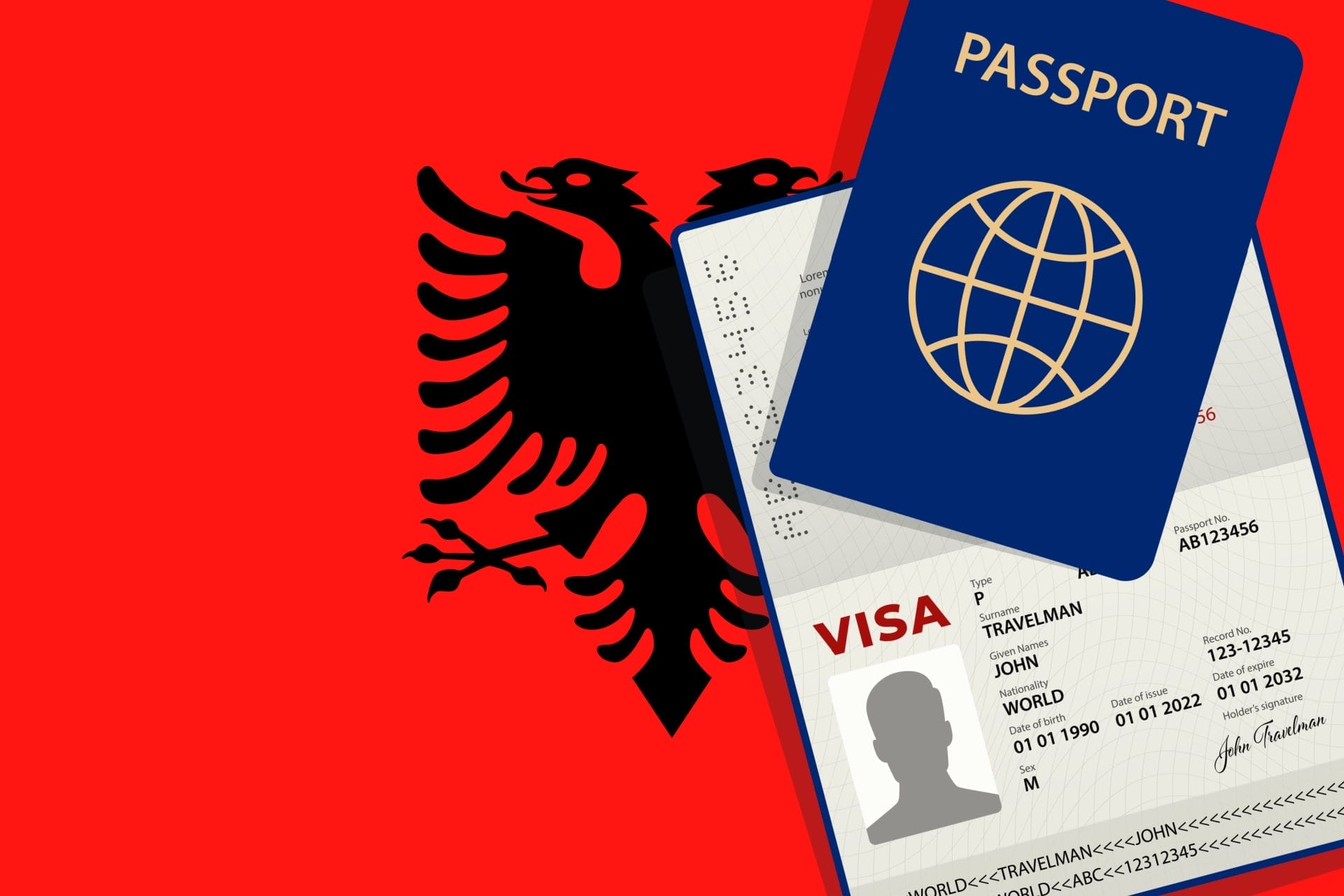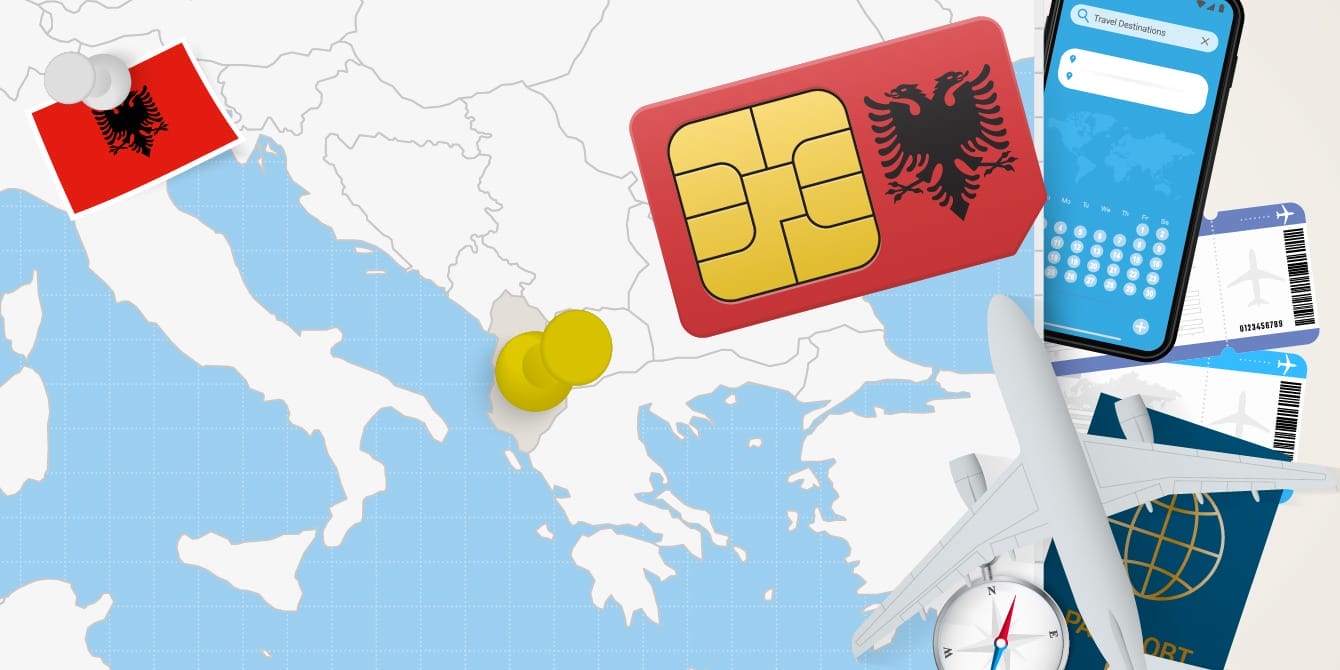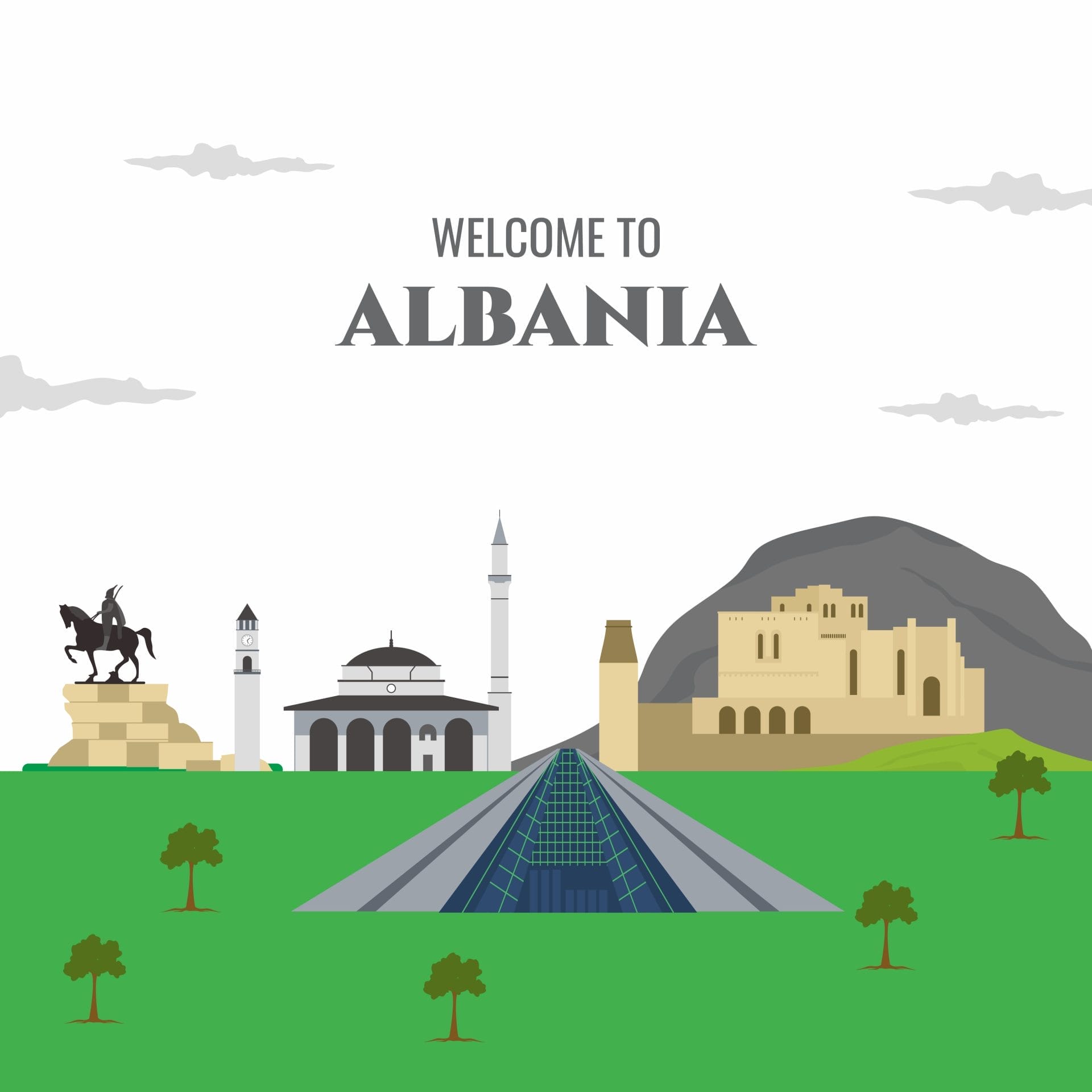
Why Visit
The National Historical Museum plays a pivotal role in safeguarding Albania’s identity.
Inaugurated on the 28th of October 1981, the museum results from almost three years of meticulous planning and organization.
Specialists in history, linguistics, archaeology, and art joined forces to bring this vision to life.
As one of the country’s largest and most significant museum institutions, it is a vital conduit for formally interpreting Albania’s history, complementing the national education system.
Through its exhibits, the museum projects a dynamic image of Albania to the world, showcasing the depth of its history and the richness of its culture.
It is a proud institution that chronicles Albania’s progression, offering insights and inspiration for future generations.
A Rich Collection of Artifacts
Housing approximately 5,000 artifacts that span from the 4th millennium BC to the latter half of the 20th century, the museum offers a comprehensive view of Albania’s historical evolution.
Each artifact, carefully preserved and displayed, invites visitors to explore a world of discovery, where they can witness the unfolding of a nation’s story, marked by resilience, innovation, and a deep-rooted cultural heritage.
A Window into Albania
For those visiting Albania from abroad, the museum offers a unique opportunity to explore the heart of Albania, presenting a rich cultural fabric that defines this nation.
From the ancient artifacts that bear witness to a time of great innovation to the sobering accounts of the communist era, the museum offers a comprehensive view of Albania’s complex and fascinating history.
A Learning Hub for Students and Scholars
The National History Museum is pivotal in safeguarding Albania’s identity as a cultural preservation and education focal point.
For students starting their historical discovery, the museum serves as a dynamic classroom where history comes alive.
Through the carefully curated exhibits, students can connect with the ancient civilizations that graced the Albanian lands, understanding the depth of their influence and the legacy they left behind.
A Fascinating Destination for Locals
Local visitors find a profound connection with their roots as they explore the museum’s pavilions.
Each artifact tells a story of the Albanian spirit, illustrating the resilience and innovation that has characterized the nation’s progression through time.
It’s a place where Albanians rediscover the pride and unity that binds them as a community, fostering a deeper appreciation for their heritage.
Exhibits and Collections
The museum is segmented into various pavilions, each dedicated to a significant period in Albania’s history:
- The Pavilion of Antiquity
- The Medieval Pavilion
- The National Renaissance Pavilion
- The Independence Pavilion
- The Pavilion of Icons
- The Pavilion of the Anti-Fascist National Liberation War
- The Communist Terror Pavilion
- The Mother Teresa Pavilion
Each pavilion serves as a gateway to a different era, offering visitors a chance to immerse themselves in the rich cultural tapestry that defines Albania.
The Pavilion of Antiquity
In the heart of the National Historical Museum lies the Pavilion of Antiquity, a space that houses a rich collection of archaeological artifacts, offering an insightful narrative into the flourishing and complex history of the Illyrian civilization, spanning from prehistory to the early Middle Ages.
Here, you will find:
Prehistoric Antiquities Collection: Begin a fascinating exploration through time as you encounter artifacts that trace back to Albania’s earliest days of human civilization. This collection showcases the evolution of society and the birth of craftsmanship and artistry.
Sculptures Collection: Admire the intricate details of relief and round sculptures, a marker of the high level of craftsmanship that flourished in ancient Illyrian cities. These masterpieces, including grave steles, offer insight into the region’s rich cultural and artistic heritage.
Vase and Minor Objects Collection: Discover the beauty and intricacy of ancient pottery and minor objects that reveal the nuances of daily life and the aesthetic sensibilities of the Illyrian people.
Coinage from Different Eras: Experience the world of ancient commerce through a remarkable collection of Illyrian, Greek, and Roman coins. These coins served as a medium of exchange and a canvas to depict the rich history and culture of the region.
The Dynamics of Economic Relationships: Witness the evidence of dynamic economic relationships between the Illyrian cities and prominent centers like Corinth and Athens. These interactions fostered a revitalization of local manufacturing and led to economic specialization, particularly in the 3rd and 2nd centuries AD.
The “Illyrization” of the Colonies: Understand the profound impact of the Illyrian influence on the colonies, reflected in the onomastics of gravestones and city currencies. This period marked a significant shift in cultural dynamics and the emergence of a distinct Illyrian identity.
The Legacy of Local Manufacturing: Learn about the enduring legacy of local manufacturing, which continued to thrive even after the arrival of Rome. The products of local craftsmanship held a significant place in the inter-regional market, showcasing the ingenuity and skill of the Illyrian artisans.
The Pavilion of Antiquity invites you to immerse yourself in a rich narrative of history, where every artifact tells a story of growth, development, and the dynamic cultural exchange that characterized the ancient Illyrian society.
It is a journey that celebrates the resilience and innovation of a civilization that left a lasting mark on the pages of history.
The Medieval Pavilion
Situated in two dedicated halls on the second floor of the Museum. This space is a rich repository of Albania’s material culture, extending from Late Antiquity to the Byzantine and Ottoman periods.
Here, you will find:
Historical Itinerary: Engage with a chronological sequence of significant events that unfolded in Albanian territory, offering a profound insight into the complex and rich history of the nation.
XII-XIV Centuries: This era, a cornerstone in Albanian history, saw the rise of the first state formations like the Principality of Arber and the Principality of Karl Topia. This period highlights Albania’s growing significance, as evidenced by the remarkable Byzantine treasury found in Kuçovë.
Epitaf of Gllavenica: Witness the grandeur of the Epitaf of Gllavenica, a precious relic dating back to 1373, which stands as a significant marker of the rich cultural and artistic heritage of the time.
Albanian Pashaliks: Discover the distinct realms of the Albanian pashaliks, focusing on the Shkodra Pashalik in the north, led by the Bushat family, and the Ioannina Pashalik in the south, under the leadership of Ali Pasha Tepelena. These regions played a pivotal role in shaping the historical landscape of Albania.
Handcrafted Weapons: Admire the craftsmanship and artistry of the period through a collection of handcrafted weapons, each narrating a story of bravery, skill, and innovation.
Integration of Historical Context: Gain a deeper understanding of the artifacts on display, each accompanied by a brief interpretation that integrates the historical context that produced them, offering a comprehensive view of the evolution of Albanian society.
Cultural Synthesis: Experience a synthesis of cultures that encapsulates the essence of various eras, providing a vivid picture of the material culture that flourished within the territories of Albania.
This pavilion serves as a gateway to a rich and complex past, inviting visitors to immerse themselves in the unfolding narrative of Albania’s medieval history, marked by significant developments, artistic flourishes, and the emergence of a distinct Albanian identity.
The Hall of Albanian Renaissance
Experience the fervor of the Albanian National Renaissance as you step into this special hall.
This section vividly portrays Albania’s strides towards fostering national unity and independence during the 19th and early 20th centuries. Here, you will learn about:
Albanian National Renaissance Movement: Delve into the broad political-cultural movement to liberate and unify Albanian territories into an independent state, fostering the development of national language, education, and culture.
Renaissance Activists and Intellectuals: Discover the contributions of prominent activists and intellectuals like Naum Veqilharxhi, Geronimo de Rada, and Kostandin Kristoforidhi, who played a pivotal role in nurturing the Albanian language and culture.
League of Prizren (1878-1881): Learn about the historic League of Prizren, a political and military alliance formed to preserve and maintain the territorial integrity of Albania and its impact on the national movement.
Congress of Manastir (1908): Explore the outcomes of the Congress of Manastir, a significant event that saw the adoption of a phonemic Albanian alphabet, fostering the growth of national language and education.
Declaration of Independence (1912): Witness the historic moment when Albania declared its independence, marking the birth of a free and sovereign nation, and the significant events and personalities that shaped this milestone.
The Hall of Independence of Albania
Learn about a pivotal era in Albanian history as you explore the Hall of Independence of Albania, situated on the third floor of the National Historical Museum.
This hall is a vivid narrative of Albania’s remarkable journey towards independence and establishing a modern state.
Here, you will find:
The Birth of a Nation (1912): Witness the historic moments of the National Assembly of Vlora’s declaration of establishing the first national government on 28th November 1912, led by Prime Minister Ismail Qemali. This section also highlights the significant reforms initiated by the Provisional Government, including judicial administration and tax collection reforms.
The London Conference of Ambassadors (1912-1913): Explore the international recognition of Albania’s borders and its official recognition as an independent, neutral state under the guarantee of the Great Powers.
The Reign of Prince William of Wied (1914): Learn about the brief reign of Prince William of Wied, his efforts to stabilize the country, and the challenges that led to his departure in September 1914.
World War I and Its Aftermath: Understand the significant impact of World War I on Albania, including the Secret Pact 1915 and the establishment of the Autonomous Province of Korca in 1916.
The Congresses of Durres and Lushnja (1918-1920): Explore the efforts to secure Albania’s full independence and relocate the capital to Tirana, marking significant steps towards parliamentary democracy.
The Rise of Ahmet Zogu (1925-1928): Discover the transformative leadership of Ahmet Zogu, who spearheaded significant developments, including the reorganization of the gendarmerie, the establishment of the National Bank of Albania, and the initiation of modern infrastructure projects.
The Kingdom of Albania (1928-1937): Witness the consolidation of modern Albania under King Zog I, characterized by the adoption of modern legislation and significant developments in infrastructure, postal services, and national defense.
Cultural and Societal Progress (1928-1938): Celebrate the remarkable progress in Albanian society during this period, including the modernization of urban lifestyles, the banning of the face veil, and the flourishing of literature and arts.
This hall invites you to immerse yourself in a transformative period of Albanian history, offering a rich narrative of stories and artifacts that showcase the resilience and determination of the Albanian people in carving out their independent path.
The Pavilion of Icons
Discover Albania’s rich spiritual heritage at the Icons Pavilion, a haven that showcases the flourishing religious artistry of the post-Byzantine period.
Established in 1999 in collaboration with the Institute of Monuments of Culture, this pavilion is a sanctuary of post-Byzantine artistry that flourished from the 16th to the early 19th century.
Here, you will find:
Iconographic Masterpieces: Experience the spiritual depth and artistic excellence of around 70 post-Byzantine icons, including the renowned “The Entrance of Saint Mary in the Temple” by Onuphrios, the founder of the Berat atelier.
Renowned Iconographers: Discover the works of celebrated iconographers such as Onufri, Cypriot Onufri, David Selenica, Kostandin Shpataraku, Constantin Jeromoni, Joan Athanasi, and others who left an indelible mark on this era of Albanian art.
Liturgical Objects: Admire exquisite liturgical objects crafted in gold and silver, which include crosses, icon covers, and gospel coverages. These pieces, intricately crafted by native goldsmiths, bear inscriptions that date back to the 17th and 18th centuries.
Two-Part Exhibition: Explore the two distinct sections of the pavilion. The first part focuses on the post-Byzantine icons, while the second part showcases ecclesiastical liturgical objects, offering a comprehensive view of that period’s spiritual and artistic life.
Artistic Flourish in the 16th – 17th Centuries: Learn about the golden age of post-Byzantine art in Albania, often referred to as the “century of Onufri”, a time marked by vibrant creativity and the establishment of the Berat atelier, which fostered the talents of Nikola Onuphrios and Onuphrios the Cypriot.
Legacy of Mihal Anagnosti: Understand the significant contributions of Mihal Anagnosti, the last iconographer of this vibrant period, whose works encapsulate the brilliance of post-Byzantine art in Albania.
Architectural Elements: Appreciate the architectural elements housed within the pavilion, including a proskynetarion, intricately designed doors, and an iconostasis, which add to the immersive experience of the exhibit.
This pavilion serves as a rich repository of Albania’s religious and artistic heritage, offering visitors a chance to immerse themselves in a period of profound creativity and spiritual depth.
The Hall of Communist Persecution
As you ascend to the National Historical Museum’s second floor, prepare to witness a somber yet crucial chapter of Albania’s history in the Hall of Communist Persecution.
This hall, resembling more of an exhibition, is designed to complete the narrative of Albania’s national historical and cultural timeline from 1945 to 1990.
Here, you will find:
Documentary Evidence: A collection of original documents that witness the harsh realities of the communist regime, including execution decisions, lists of death punishments, and records of political prisoners.
Photographic Records: A series of poignant photographs documenting significant events such as the Uprising of Postriba, the trials against the opponents of the communist regime, and the activities at the Soviet Union Embassy.
Religious Persecution: An account of the severe religious persecution that marked Albania as the only atheist country in the world in 1967, leading to the widespread destruction of religious sites and cultural heritage.
Prisons and Internment Camps: A detailed representation of the various prisons, forced labor camps, and internment camps that operated during this period, offering a glimpse into the harsh conditions and treatment meted out to those who were politically accused.
Dictatorial Downfall: An exploration of the downfall of the communist dictatorship, highlighting the tragic fate of key figures in the regime and the widespread suffering caused by policies of self-isolation and economic hardship.
Artistic and Cultural Loss: A tribute to the artists, writers, and cultural figures who suffered under the regime, showcasing the stories of those who were executed, imprisoned, or interned on various charges.
Contemporary Museological Concept: The hall is curated based on modern museological concepts, aiming to provide a comprehensive and nuanced understanding of this dark period in Albania’s history.
This hall serves as a solemn reminder of the trials and tribulations faced by the Albanian people during the communist era, offering a space for reflection and understanding of the resilience and spirit of Albania as it navigated through these challenging times.
The Hall of the Anti-Fascist National Liberation War
This hall vividly portrays the resilience and unity of the Albanian people during a time of great adversity.
Here, you will find:
Resistance Movements: Gain an understanding of the various resistance movements that sprang up across Albania, united in their goal to liberate the nation from fascist forces. Learn about the brave individuals who led these movements and the sacrifices they made for the freedom of their country.
Strategic Collaborations: Discover the alliances formed during this period, both within Albania and with allied forces, that played a crucial role in the efforts to reclaim the nation’s sovereignty.
Key Battles and Operations: Immerse yourself in the detailed accounts of significant battles and operations during this time, showcasing the strategic prowess and determination of the Albanian resistance.
Personal Narratives: Engage with personal narratives and firsthand accounts that bring to life the experiences of those who lived through this tumultuous period, offering a human perspective on the events of the war.
Artifacts and Memorabilia: Explore a curated collection of artifacts and memorabilia from this era, including weapons, uniforms, and documents, that provide a tangible connection to the past.
Photographic Exhibits: Experience the war through powerful photographic exhibits that capture the gravity, heroism, and camaraderie that marked this period in Albania’s history.
Impact on Civilian Life: Understand the profound impact the war had on civilian life, including the challenges faced by ordinary Albanians and the changes that occurred in society due to the conflict.
Post-War Reconstruction: Learn about the efforts to rebuild Albania in the aftermath of the war, focusing on the initiatives undertaken to restore stability and progress to the nation.
This hall stands as a powerful reminder of the courage and solidarity exhibited by the Albanian people during a critical period in their history, offering visitors an in-depth look at the events that shaped the modern identity of Albania.
Visitor Information
Before you explore the rich history encapsulated within the walls of the National History Museum, here are some essential details to make your visit smooth and enjoyable.
Opening Hours
The National History Museum welcomes visitors seven days a week, allowing you ample opportunity to immerse yourself in Albania’s vibrant history.
You can plan your visit any day from Monday to Sunday between 09:00 and 19:00, giving you plenty of time to explore the museum’s extensive exhibits.
Accessibility
The museum is thoughtfully designed to be accessible to everyone, including those using wheelchairs.
However, for any specific accessibility requests or concerns, contacting the museum is recommended to ensure a comfortable visit.
Contact Information
To learn more about the museum or to address any queries you might have, feel free to reach out using the following contact details:
- Phone: +35542223977
- Fax: +35542228389
- Email: [email protected]
- Address: Sheshi “Skenderbej”, Bulevardi Zogu I, Tirane, Albania
Best Time to Visit
While the National History Museum offers a rich experience throughout the year, the best time to visit would arguably be spring (March to May) or fall (September to November).
During these periods, the weather in Tirana is pleasant, and you can explore the museum without the summer crowds.
Early mornings during weekdays can be a quieter time to visit, allowing you to absorb the wealth of information at your own pace.
Currency Accepted
The primary currency accepted at the museum is the Albanian lek.
However, for the convenience of international visitors, major credit and debit cards are also accepted.
Carrying some cash in Albanian lek is recommended for smaller purchases like souvenirs.
Guided Tours & Languages Spoken
The museum primarily operates in Albanian, reflecting the rich linguistic heritage of the country.
Exhibits are also detailed in English to cater to the museum’s diverse audience, ensuring a comprehensive understanding for international visitors.
Guided tours may be available in other languages upon request, facilitating a deeper connection with the exhibits.
Facilities & Amenities
Whether visiting with family or solo, here’s what you can expect regarding facilities and amenities.
On-site Facilities
During your visit to the National History Museum, you’ll find several facilities to enhance your experience.
Apart from the well-curated exhibits, the museum houses clean and well-maintained restrooms for your convenience.
Additionally, don’t forget to stop by the souvenir shop, where you can find a selection of memorabilia that captures the essence of your visit.
From books to crafts, take a piece of Albanian history home with you.
Amenities for Families
Visiting with family? The National History Museum ensures a fulfilling visit for families with children.
The museum is equipped with family-friendly amenities to facilitate an enjoyable visit.
Whether it’s interactive exhibits to keep the young ones engaged or comfortable seating areas for a brief rest, families can look forward to a visit that caters to the needs of each member, making it a memorable experience for all.
Tips for Your Visit
Setting foot in the National History Museum is like stepping into a vivid narrative woven through time.
To ensure that your visit is enriching and smooth, we have compiled a few tips that might come in handy.
Allocate Sufficient Time: The museum houses an extensive collection that narrates the rich history of Albania. Ensure to allocate sufficient time to fully appreciate the depth and breadth of the exhibits, allowing yourself to connect with the stories and artifacts that resonate with you.
Capture Moments Through Photography: While immersing yourself in the historical narratives, don’t forget to capture moments through your lens. However, adhere to the museum’s guidelines regarding photography to maintain the sanctity of the exhibits and the experience for other visitors.
Opt for Guided Tours: Consider a guided tour to enhance your understanding and connection with the exhibits. These tours, led by knowledgeable guides, offer deeper insights into each exhibit’s narratives, making your visit educational and enriching.
Nearby Attractions
While in Tirana, your adventure doesn’t have to stop at the museum.
The city offers a range of other attractions that you might find interesting.
Here are some suggestions to consider for a fulfilling trip.
Skanderbeg Square and Monument
This is the heart of the city, recently pedestrianized and adorned with multi-colored paving stones from different parts of the country.
The square is named after a national hero who led a rebellion against the Ottoman Empire.
The Skanderbeg Monument is a notable attraction sitting across from the National Historical Museum.
Opera & Ballet Theatre
Located next to the National Historical Museum, this is the largest theatre in Albania. The building itself is impressive and offers shows that you might enjoy. Nearby, there’s an “I Love Tirana” sign, a popular spot for photos.
Et’hem Bey Mosque and Clock Tower
This mosque sits at the far end of Skanderbeg Square and is part of an architectural complex with the Tirana Clock Tower, built in 1822.
You can enjoy a splendid view of Skanderbeg Square from the top of the clock tower.
Bunk’Art 2
A short distance from the main square, this museum is housed in a communist-era nuclear bunker and narrates the history of the Albanian History of Internal Affairs from 1912-1992.
It also provides information about the “Sigurimi,” the country’s brutal political police force.
Resurrection of Christ Orthodox Cathedral
This cathedral is a unique attraction in Tirana, the third largest structure in the Balkans.
It was built in 2012 to celebrate the 20th anniversary of the revival of the Albanian Orthodox Church.
House of Leaves Museum
This museum offers insights into the communist era of Albania and is housed in the former headquarters of the National Intelligence Service.
It showcases the methods used by this secret service to spy on citizens who were against the regime.
Tirana Castle (Fortress of Justinian)
Although only one of the main walls remains, this site dates back to the 14th century.
You might find some artistic souvenirs here.
Pyramid of Tirana
Initially a museum dedicated to the former communist leader Enver Hoxha, it is now being refurbished to become a youth IT center.
Namazgah Mosque
The largest mosque in the Balkans, constructed to accommodate the crowds that gather at Skanderbeg Square during Islamic holidays.
Grand Park of Tirana
A beautiful park with an artificial lake and walking trails, ideal for a leisurely stroll during the warmer months.
Bunk’Art 1
Like Bunk’Art 2, this museum focuses on Albanian history during the communist regime, centered around the lives of everyday people and the history of the Albanian communist army.
Your Turn to Visit
Standing before the grand mosaic at the entrance, you are at the gateway to Albania’s rich history.
We invite you to witness the tales of resilience, culture, and heritage that resonate within the walls of the National History Museum.
Visitor Reviews & Ratings
We believe in the power of shared experiences. After your visit, we encourage you to share your impressions and reviews, helping others tailor their visits and immerse themselves in the museum’s rich narratives.

